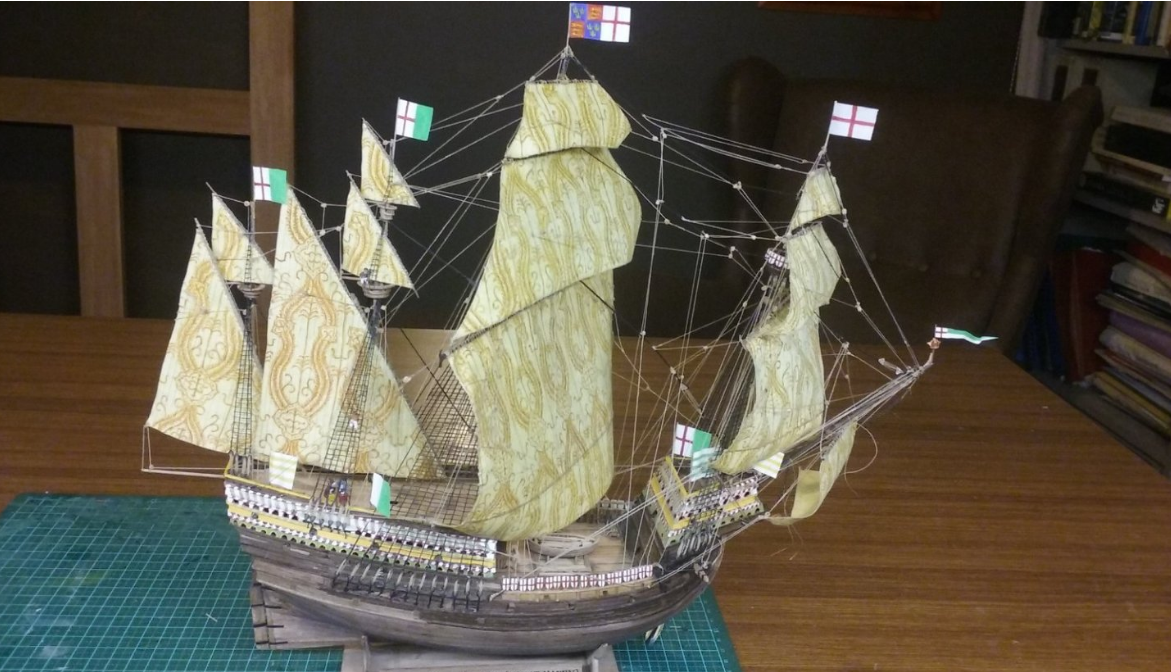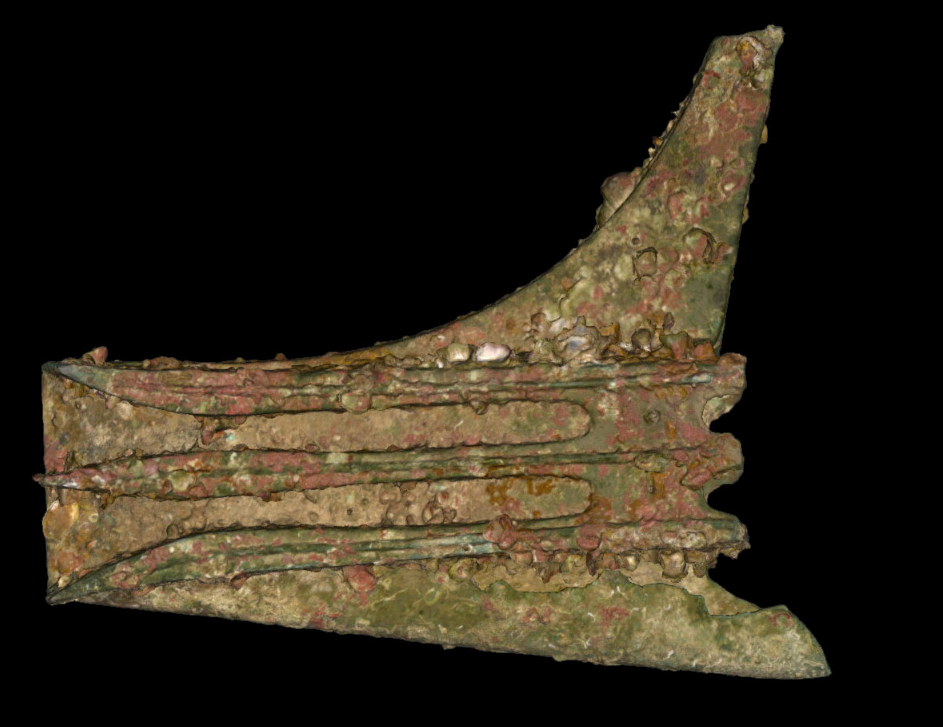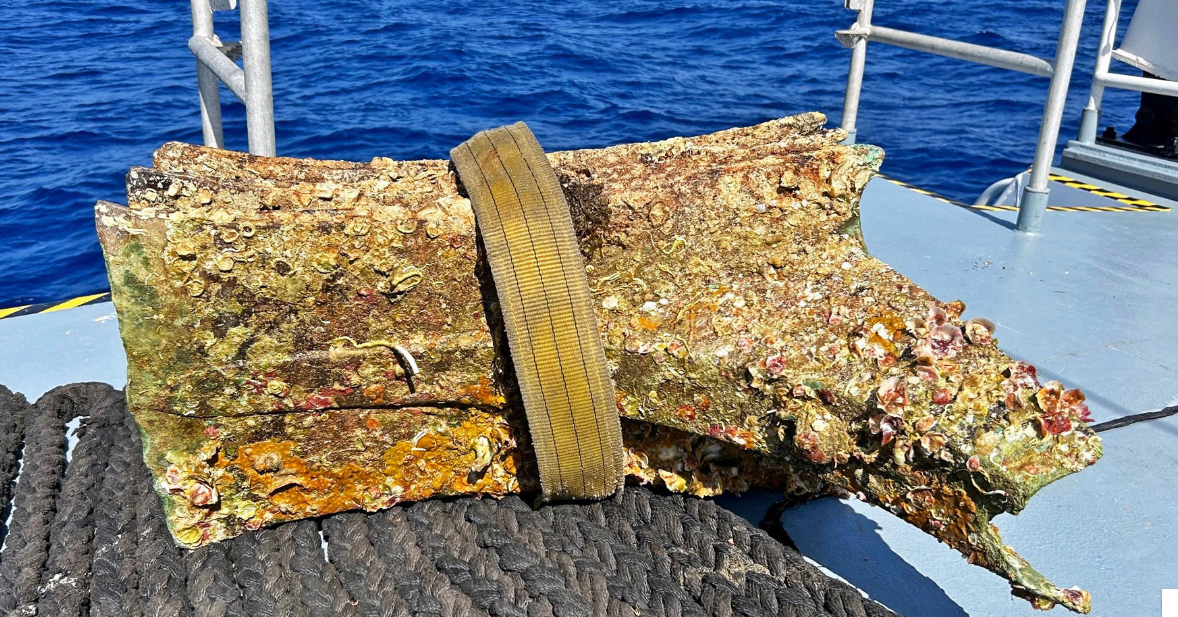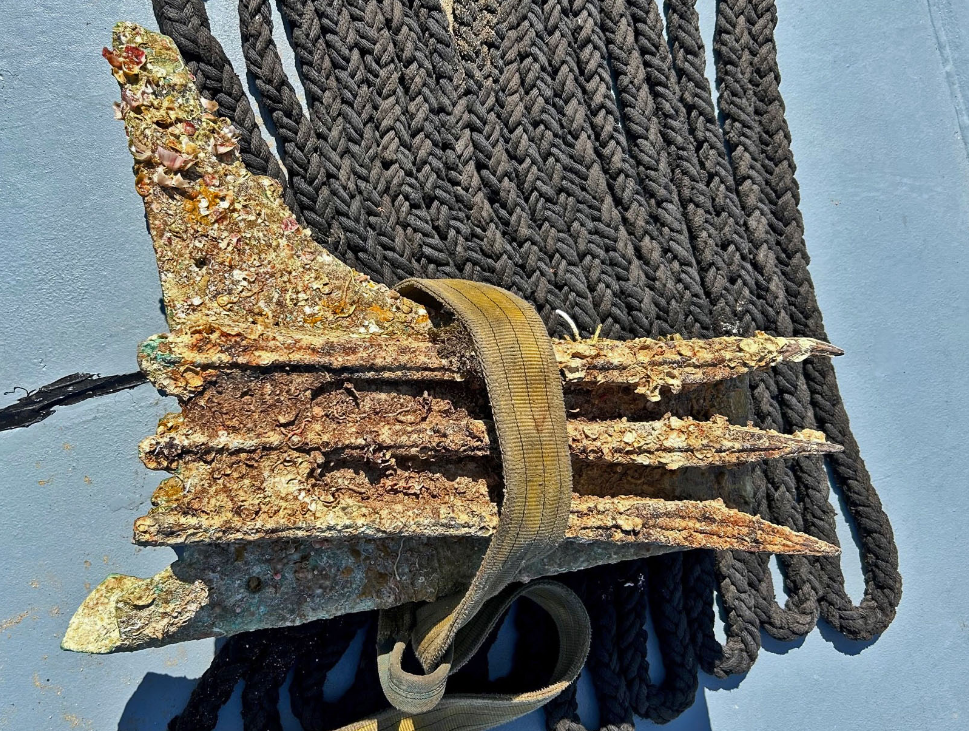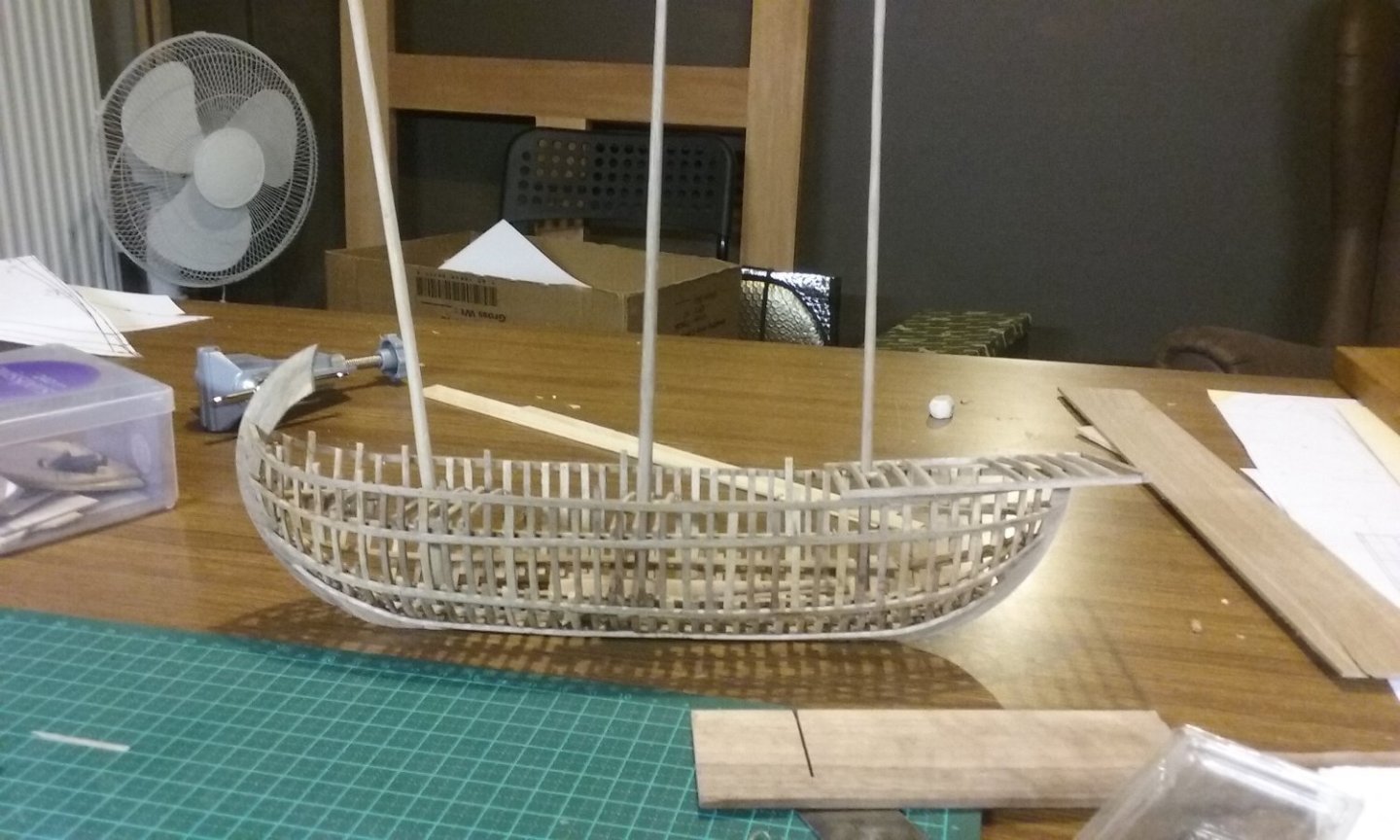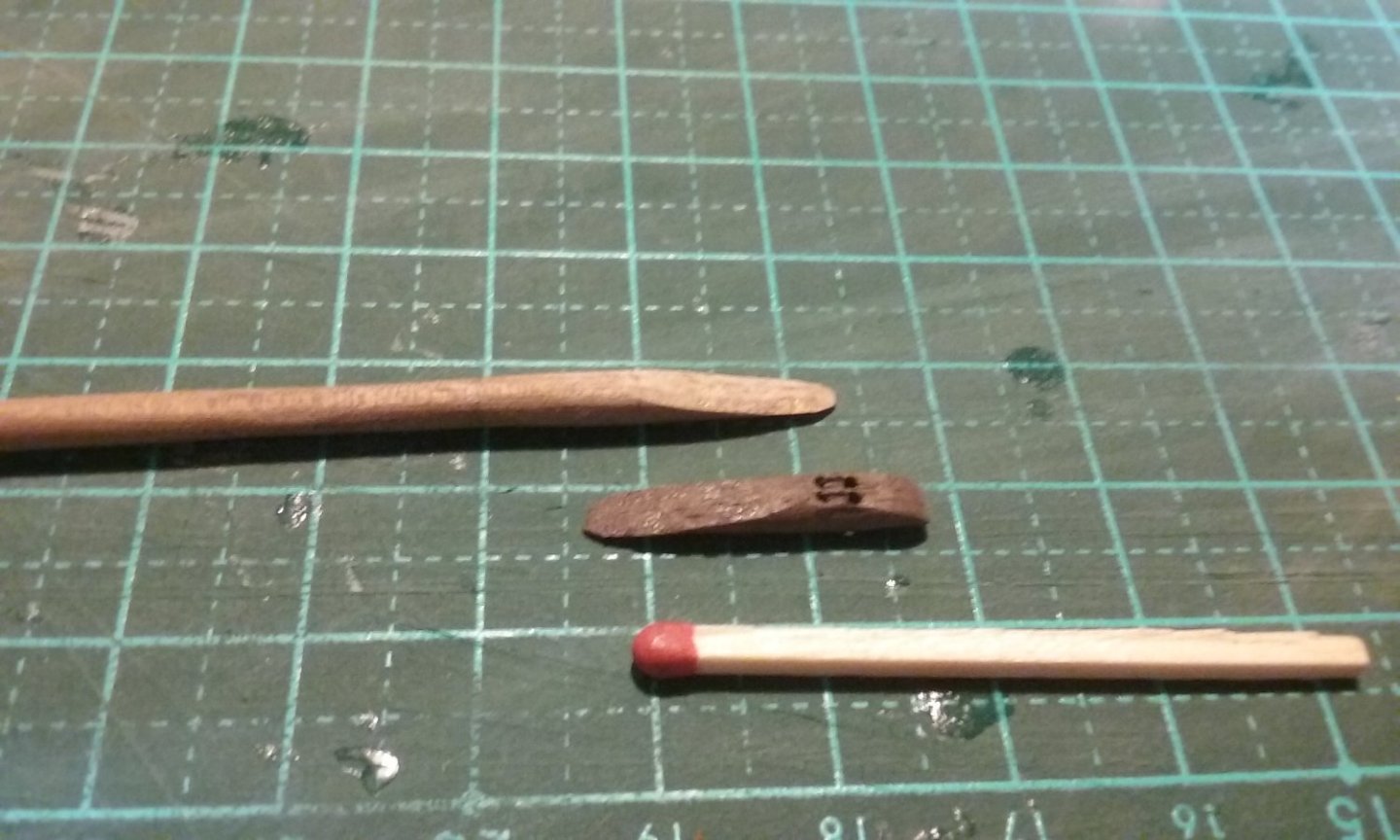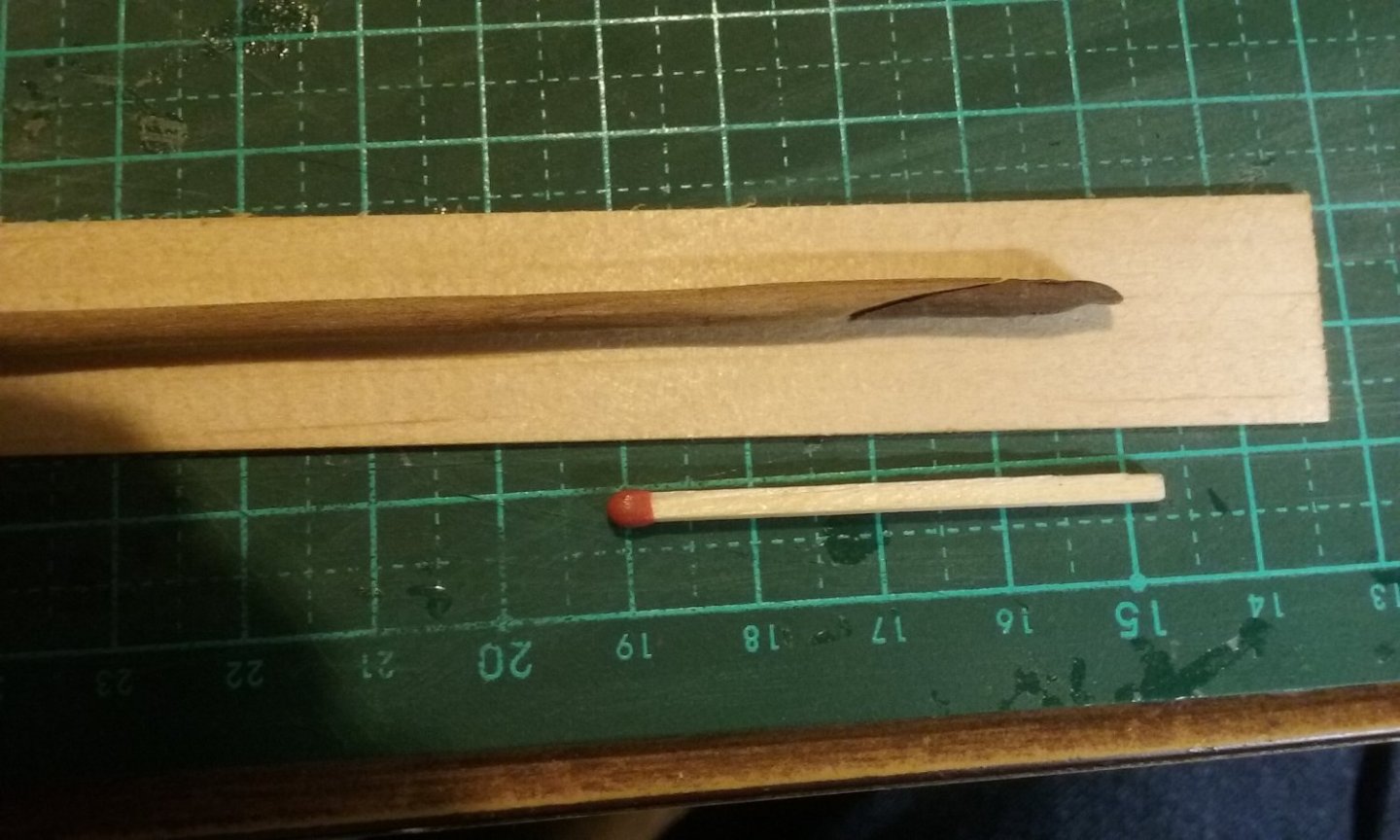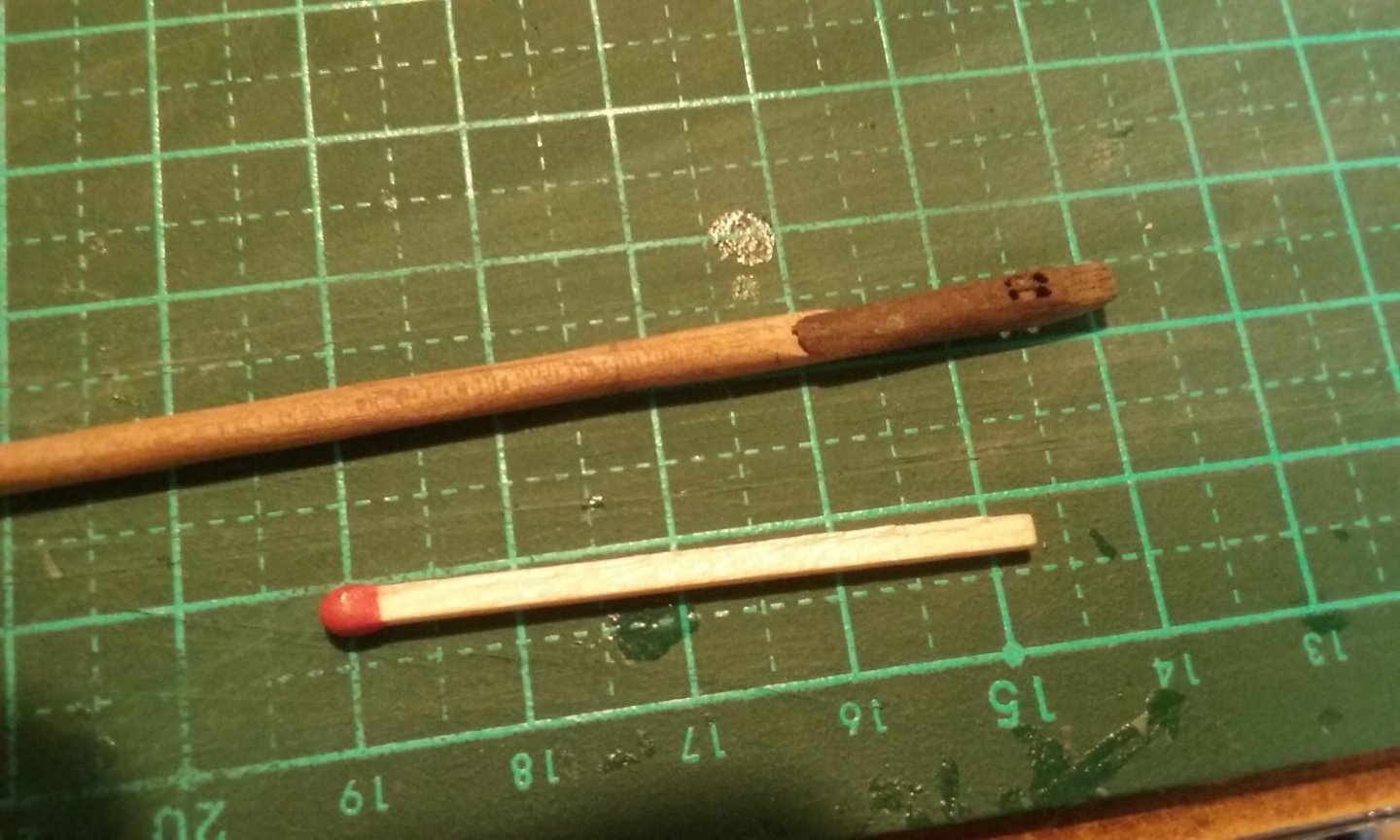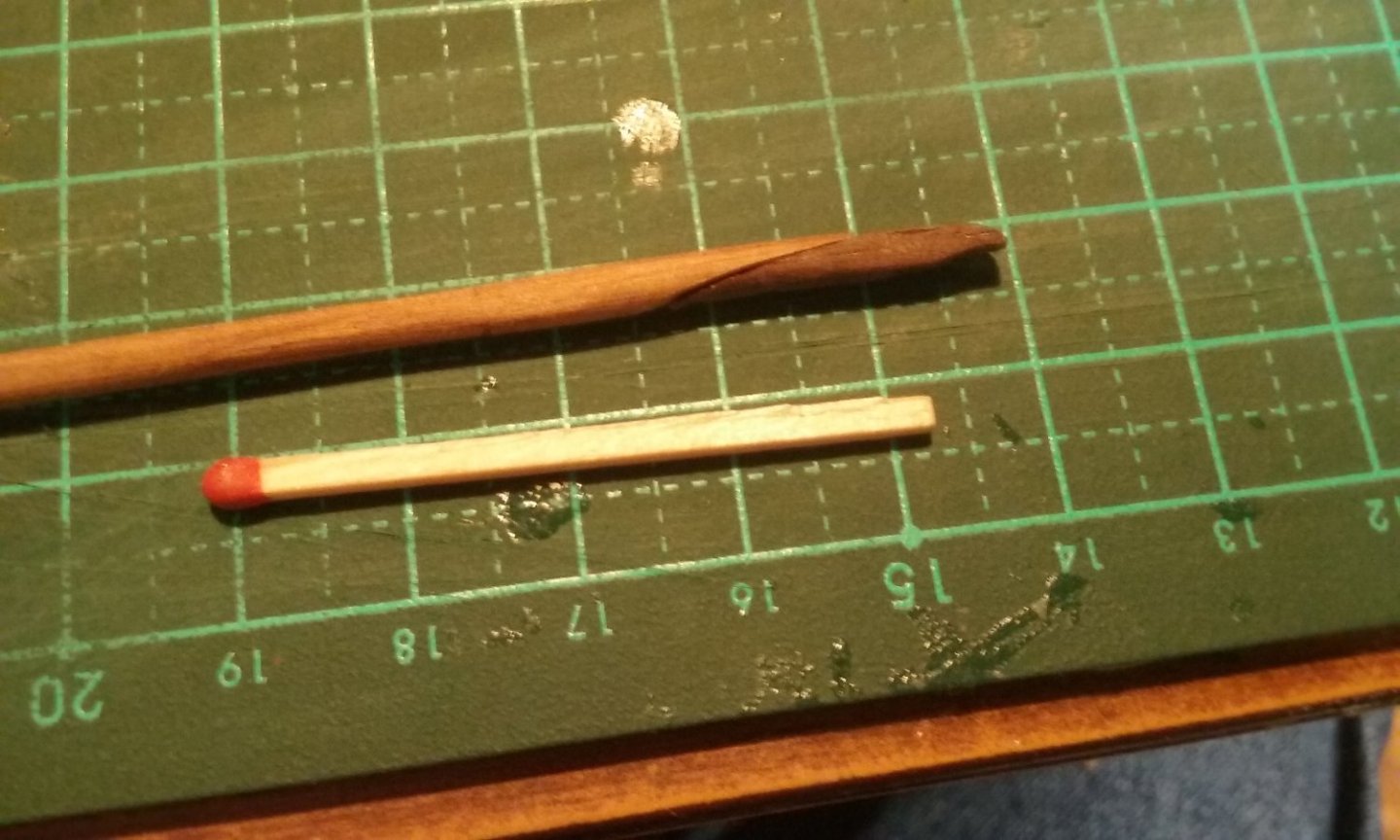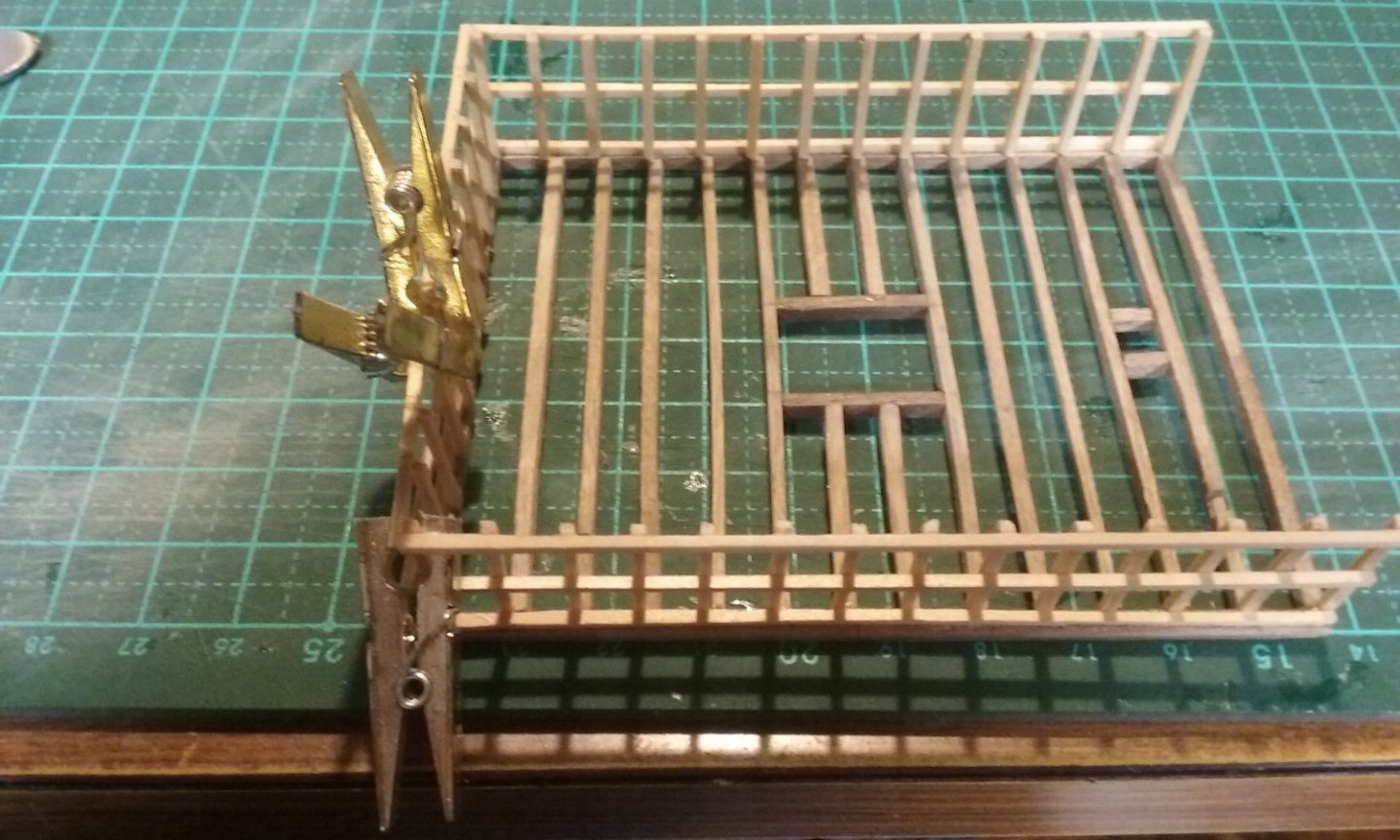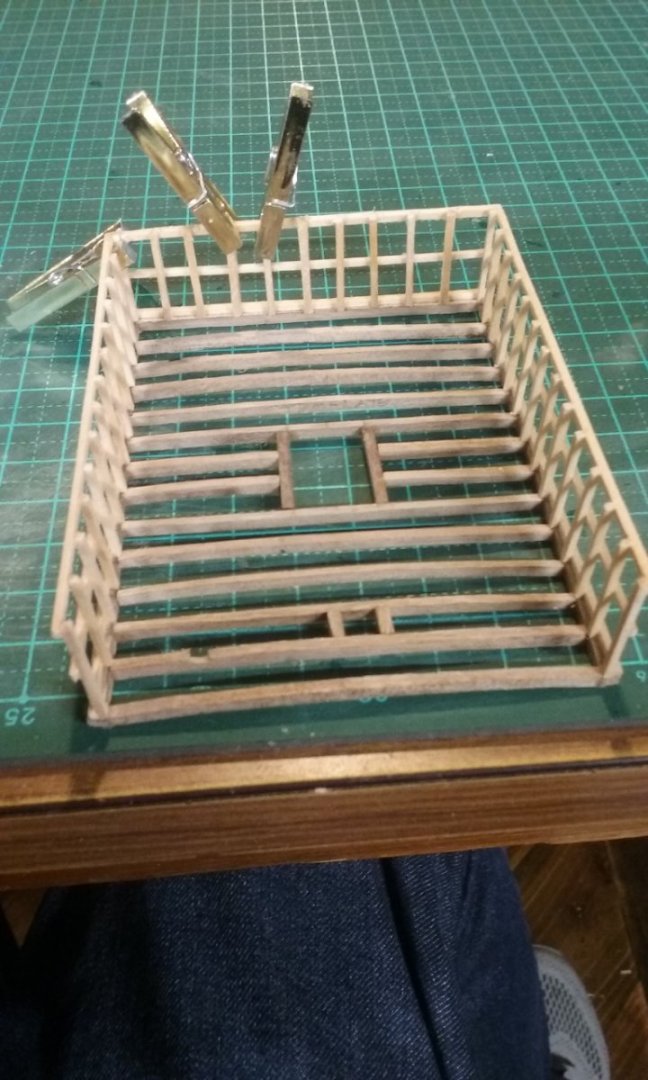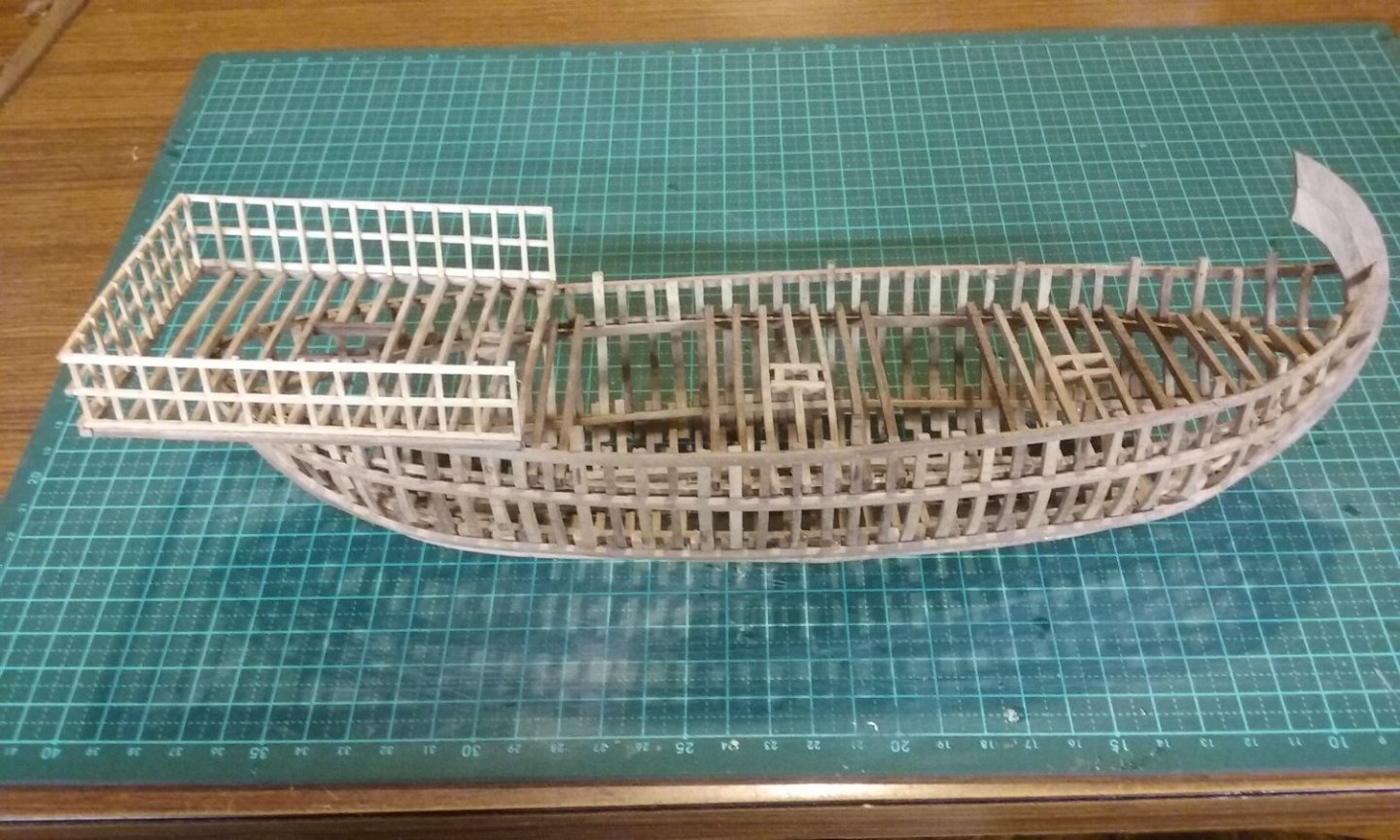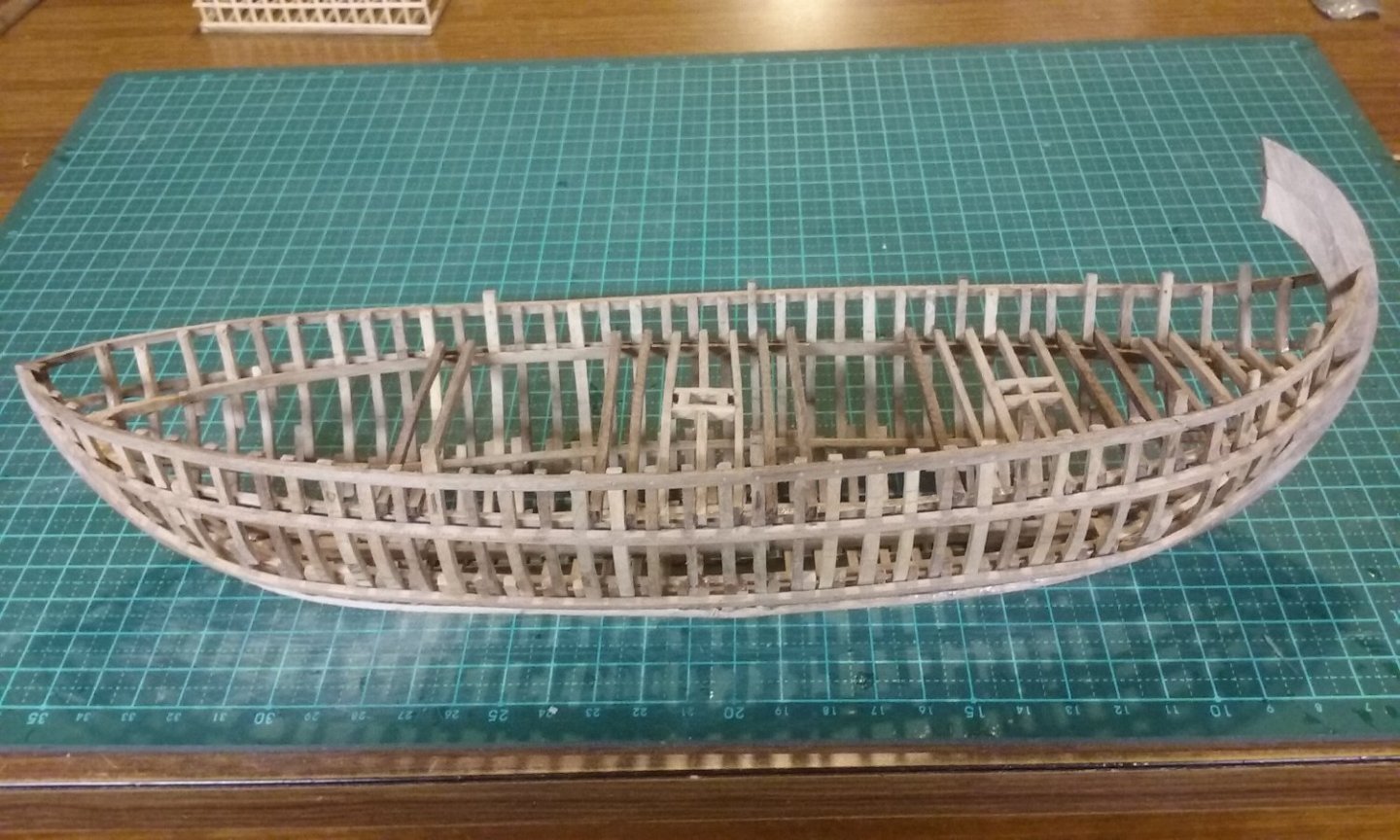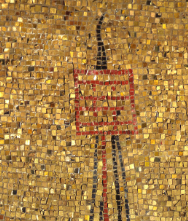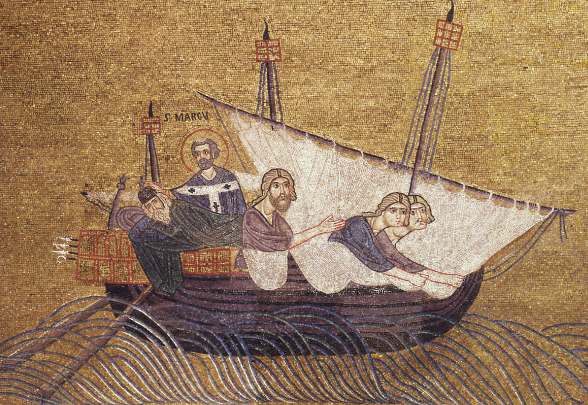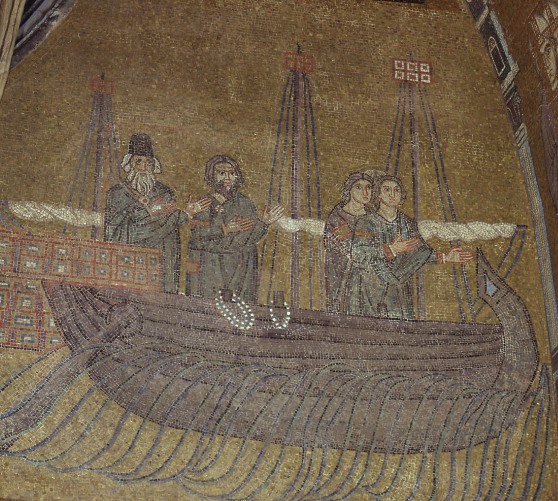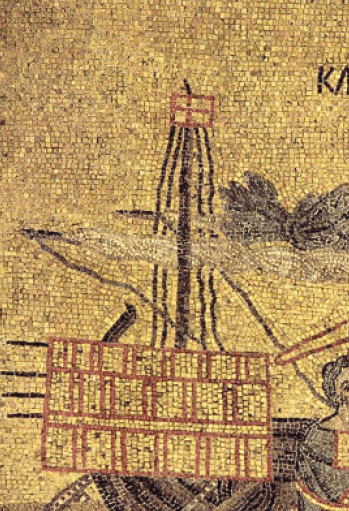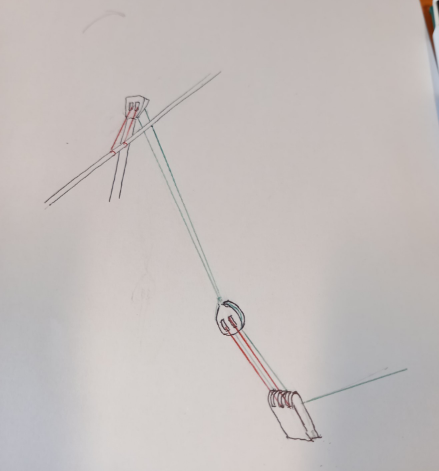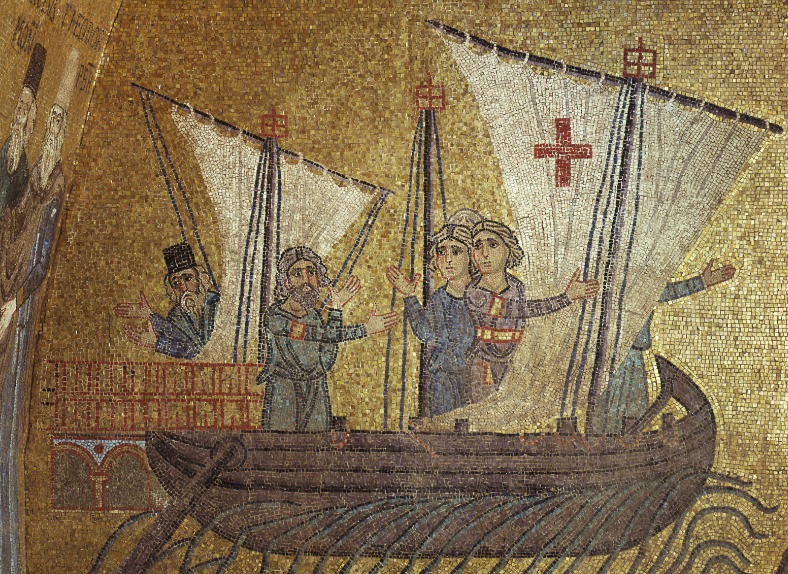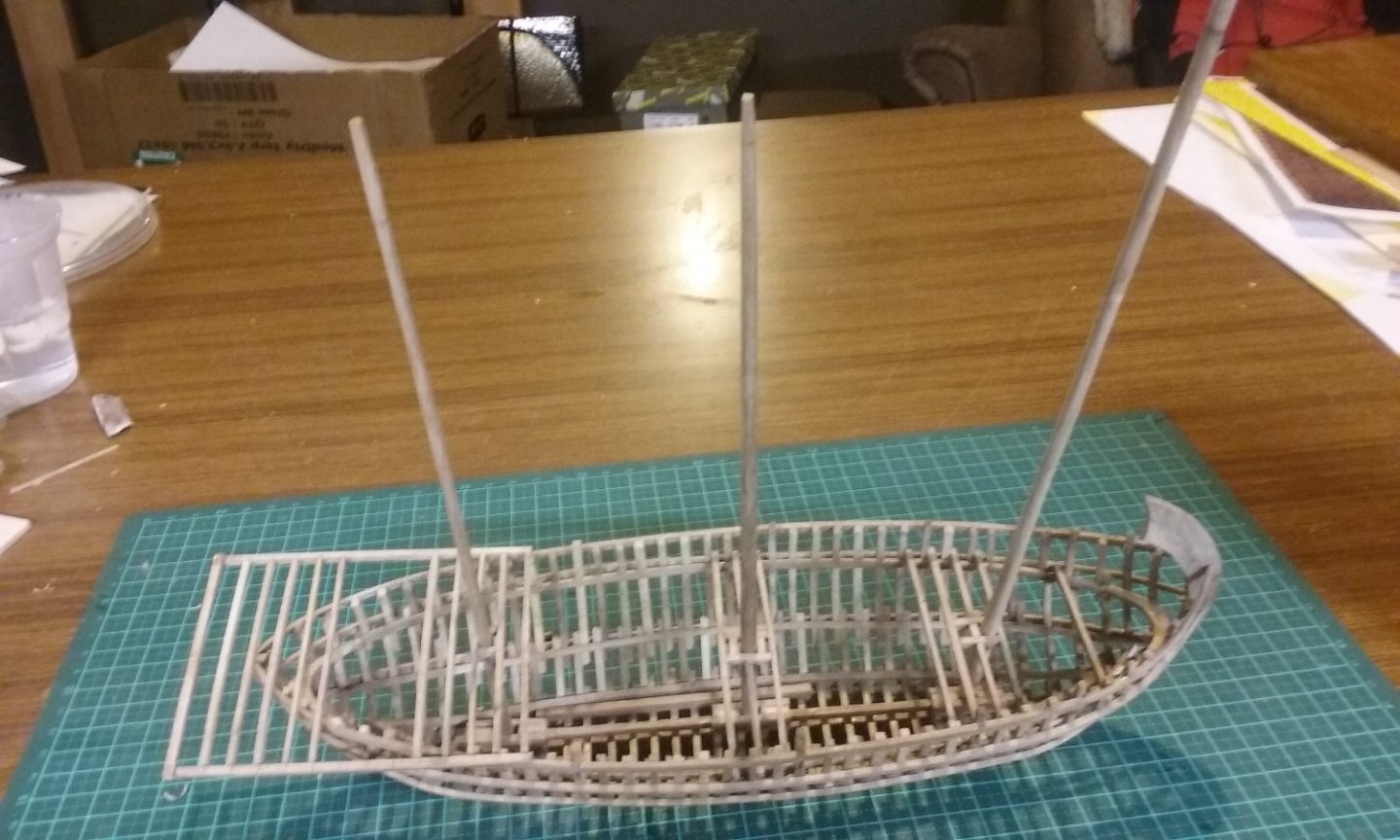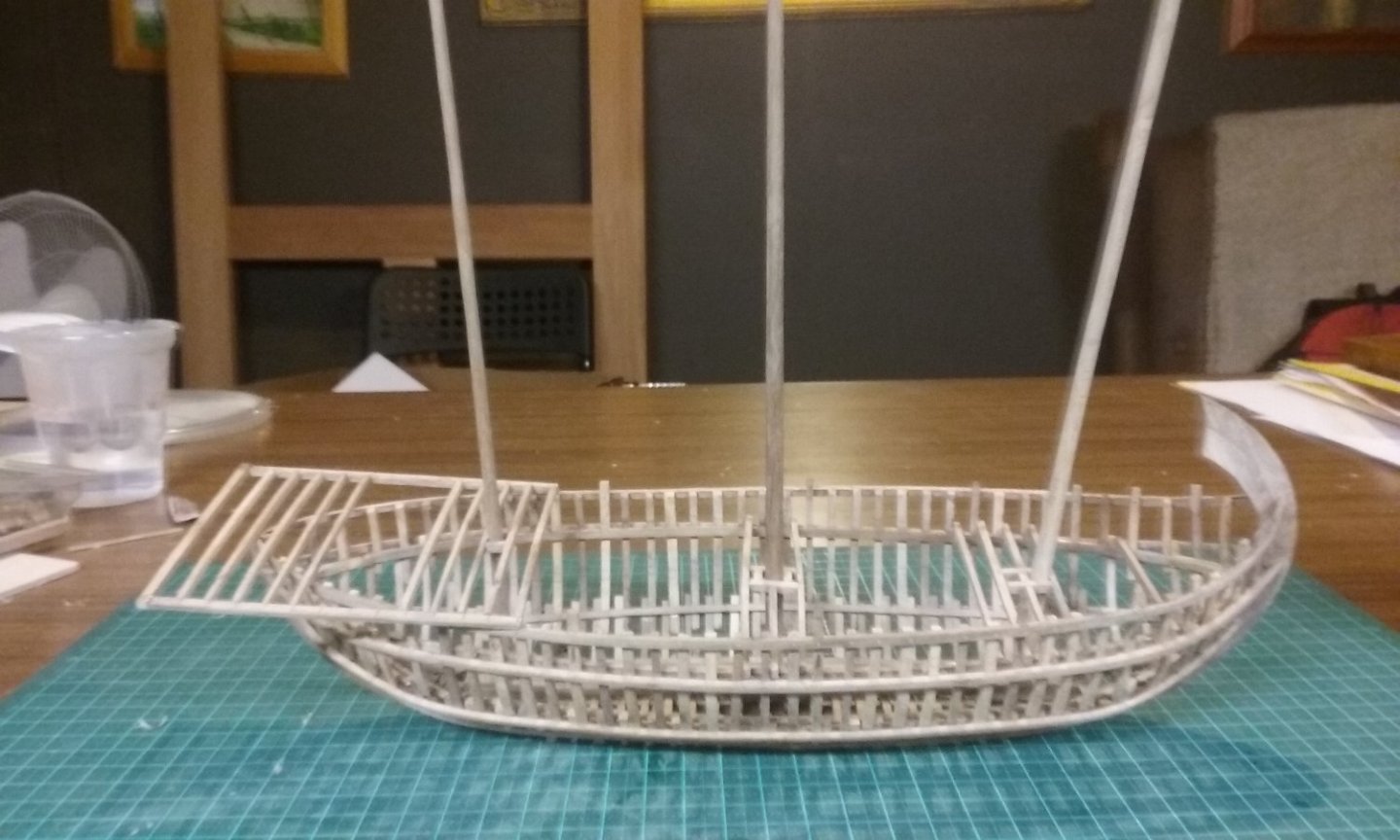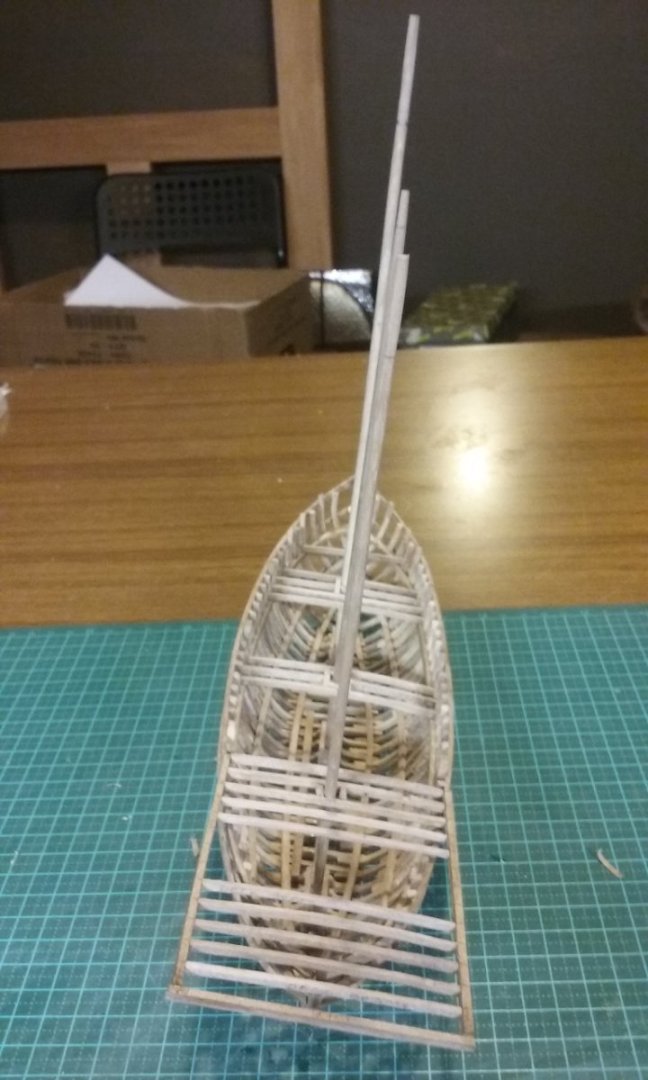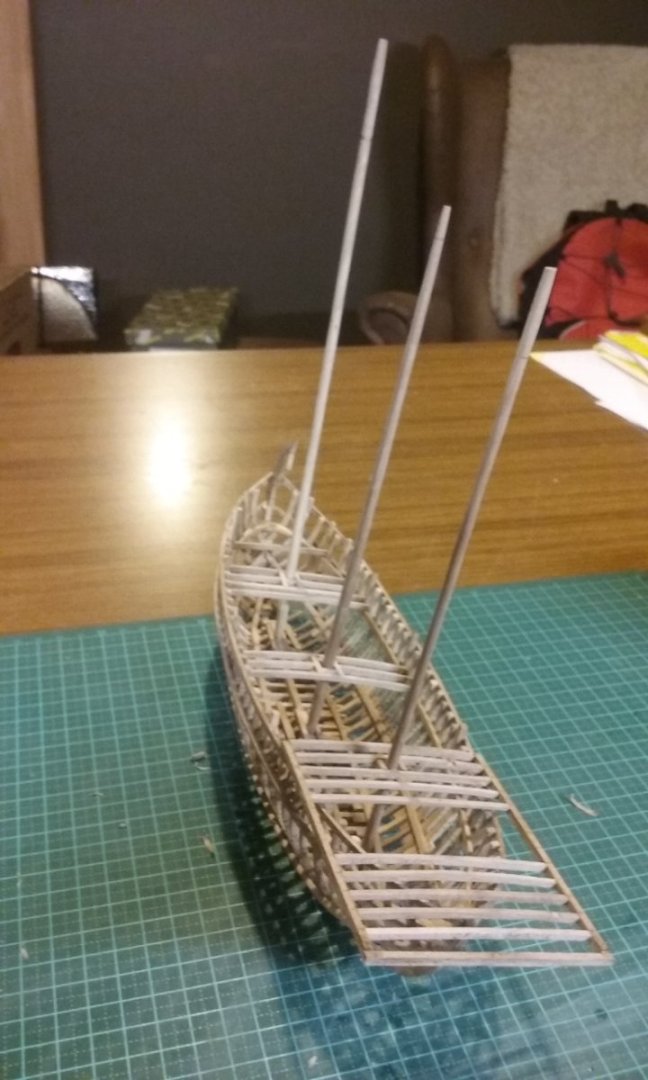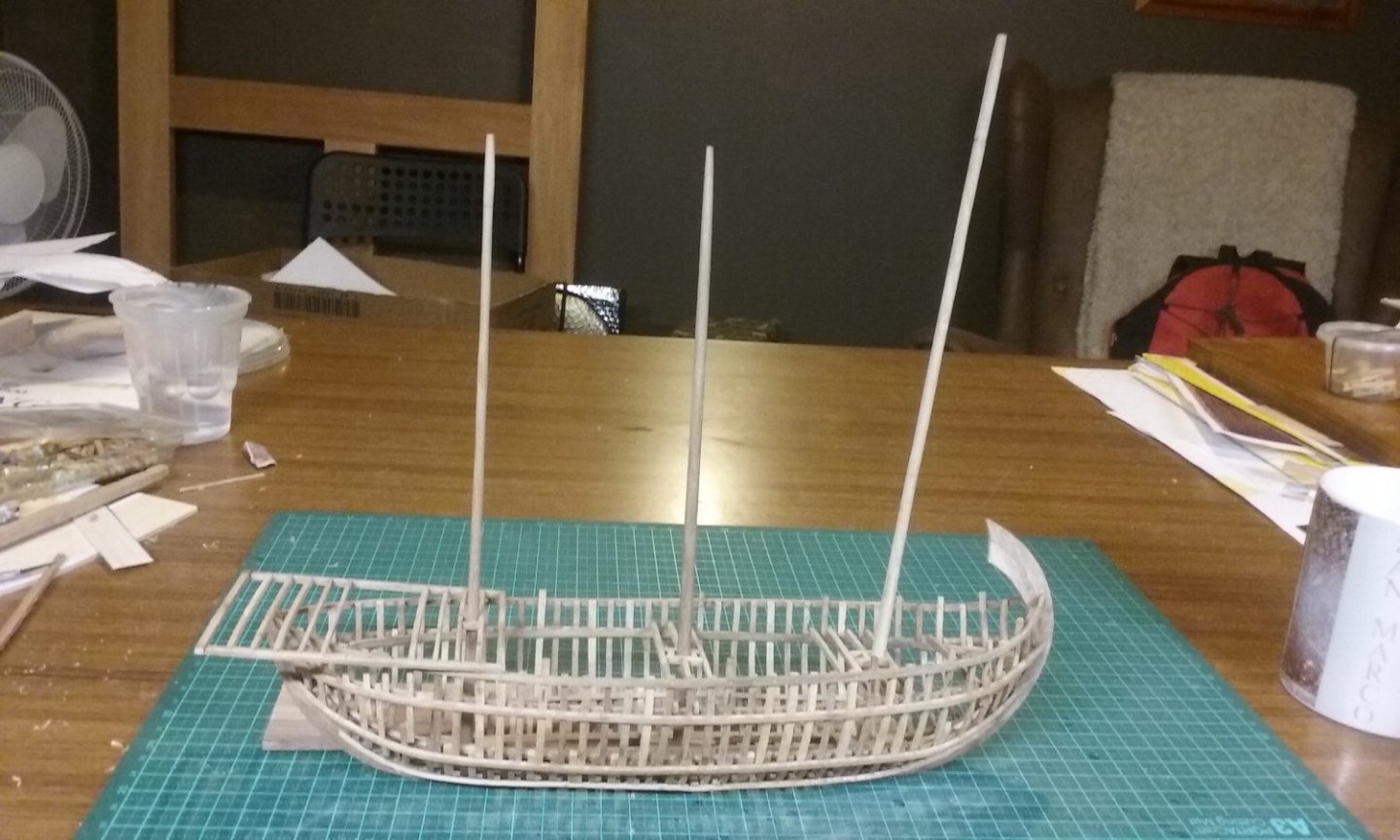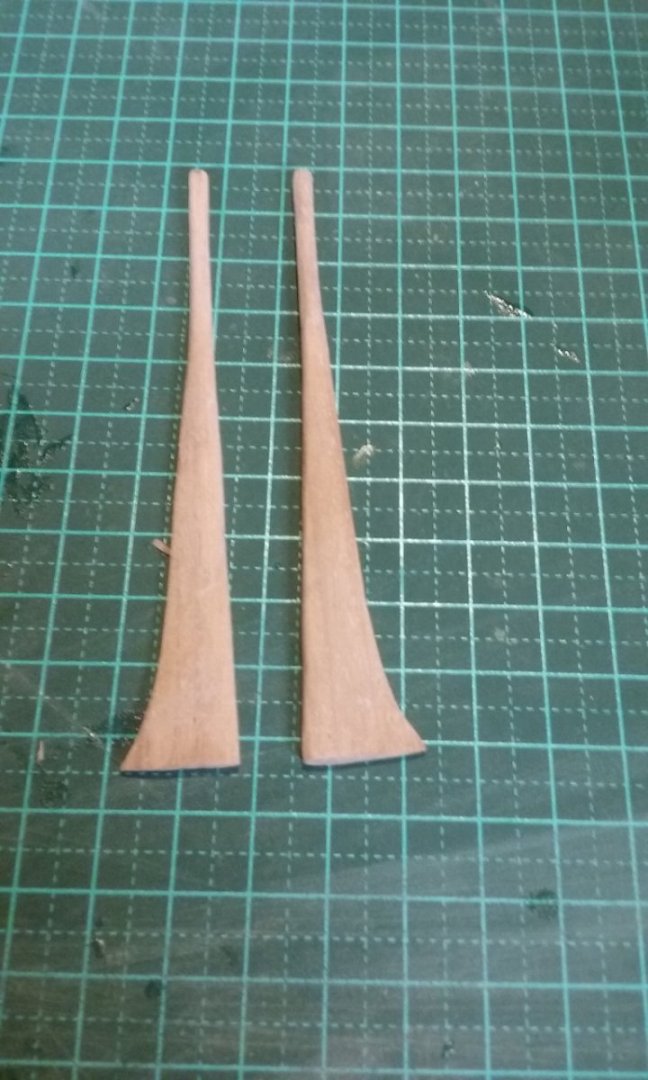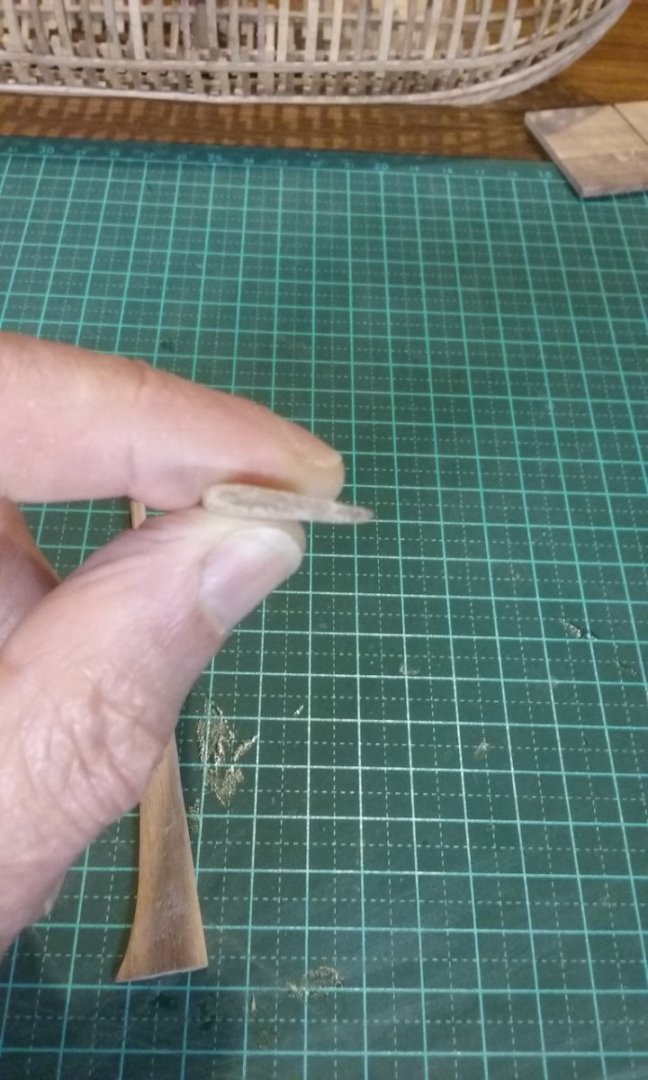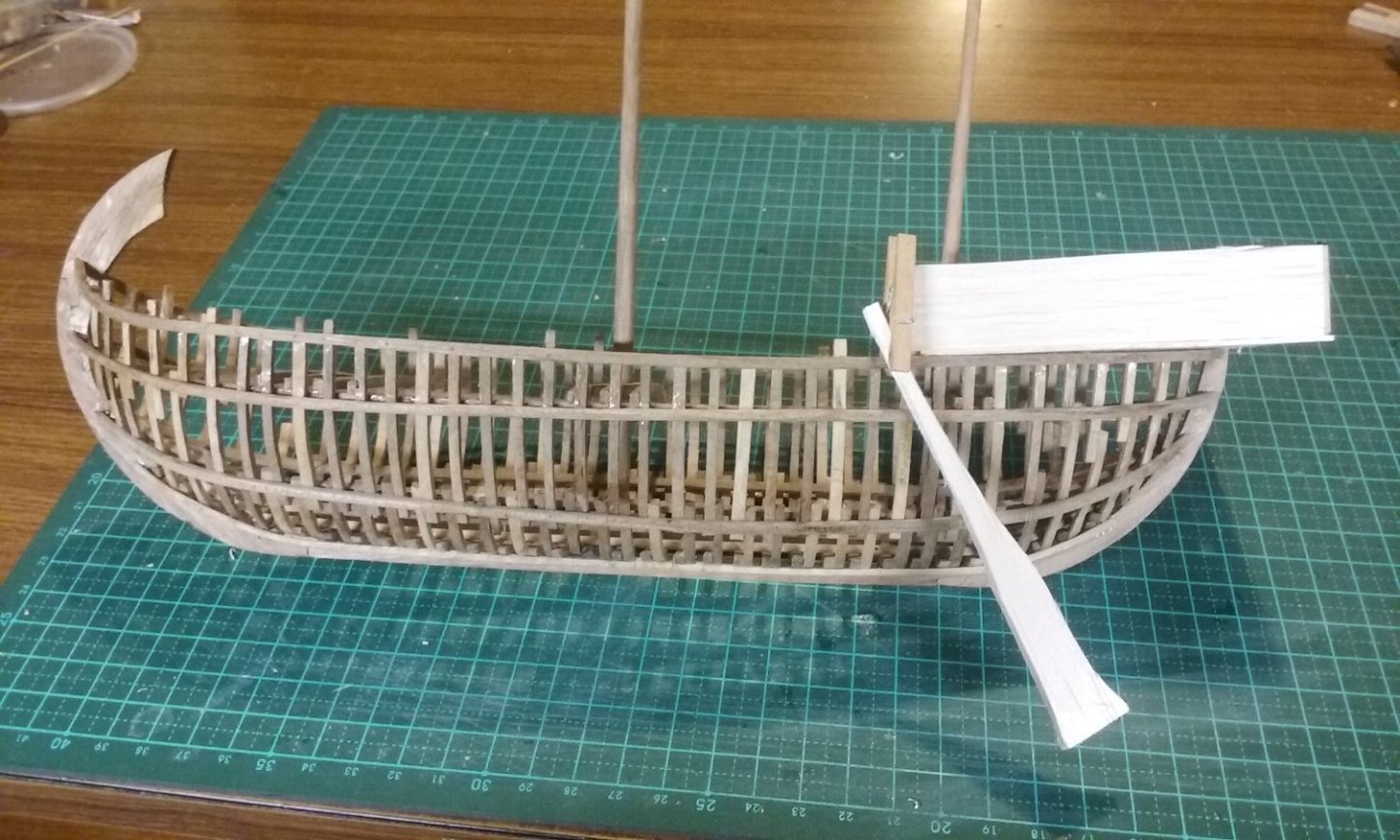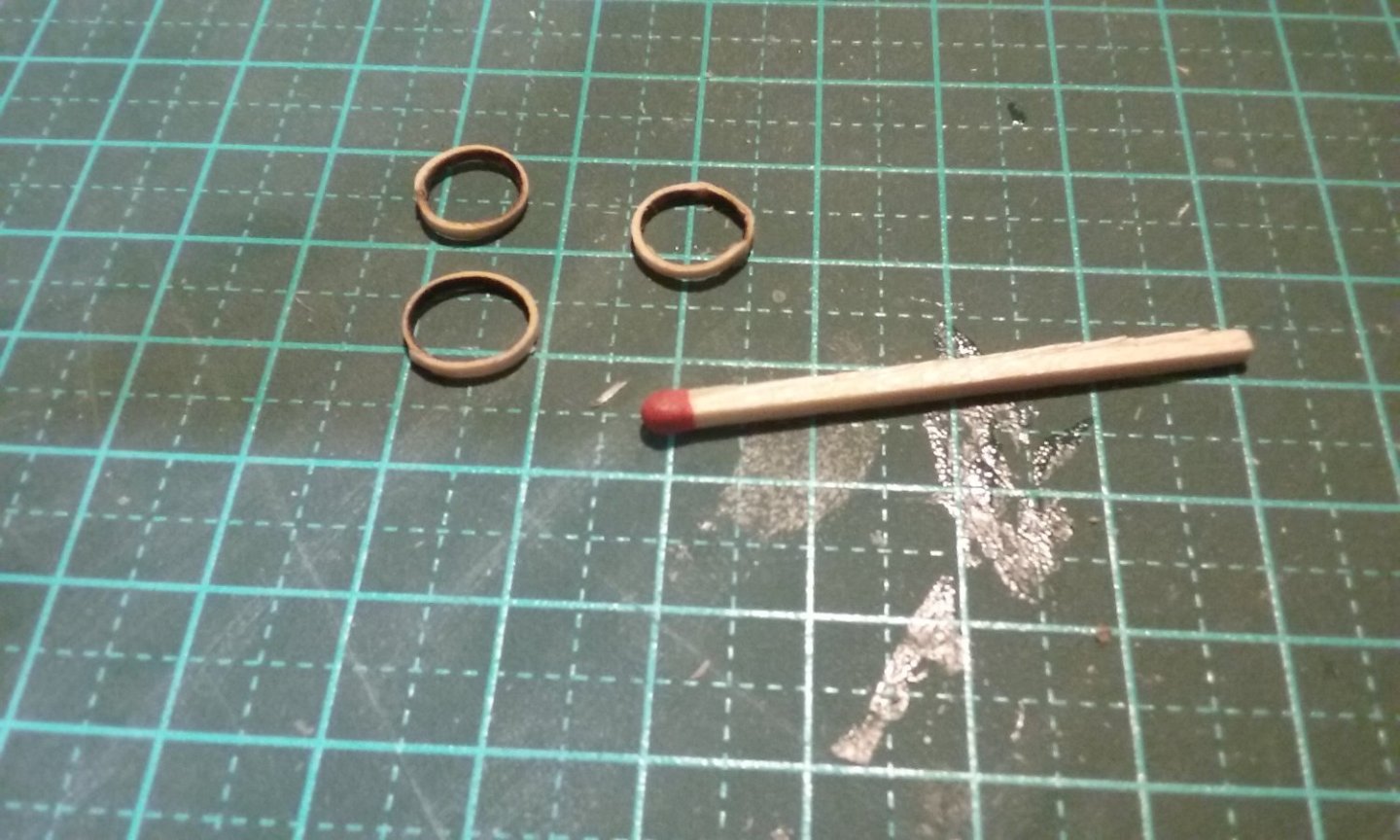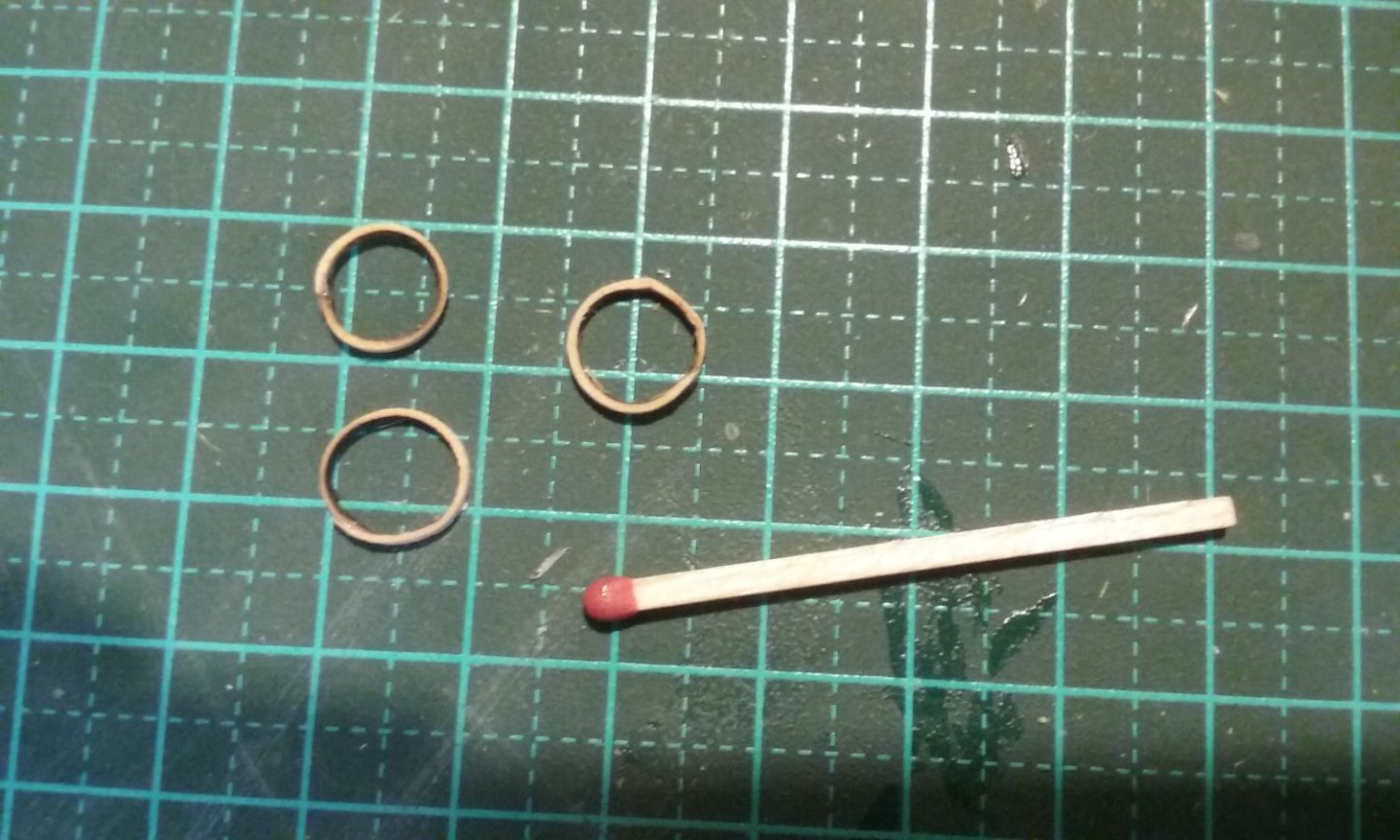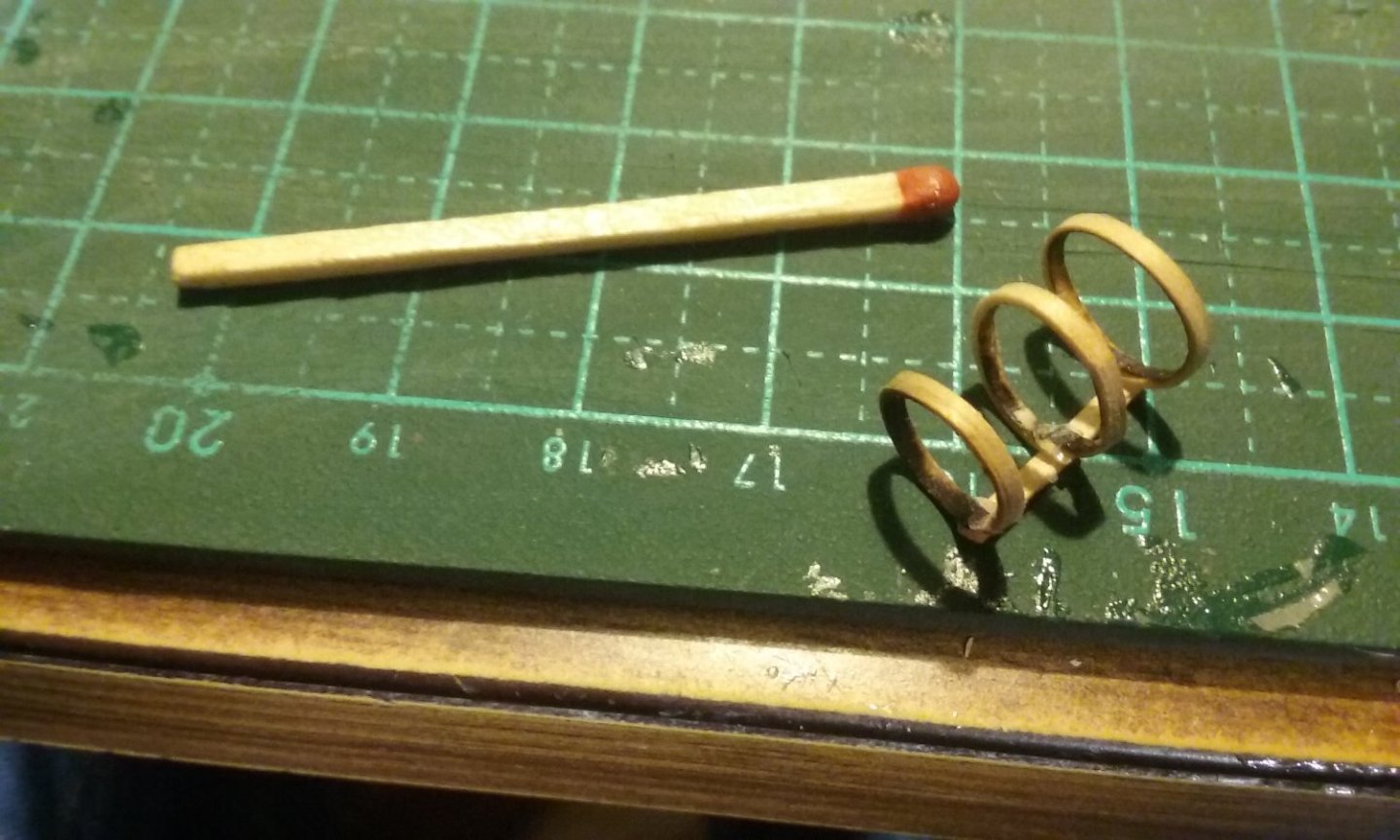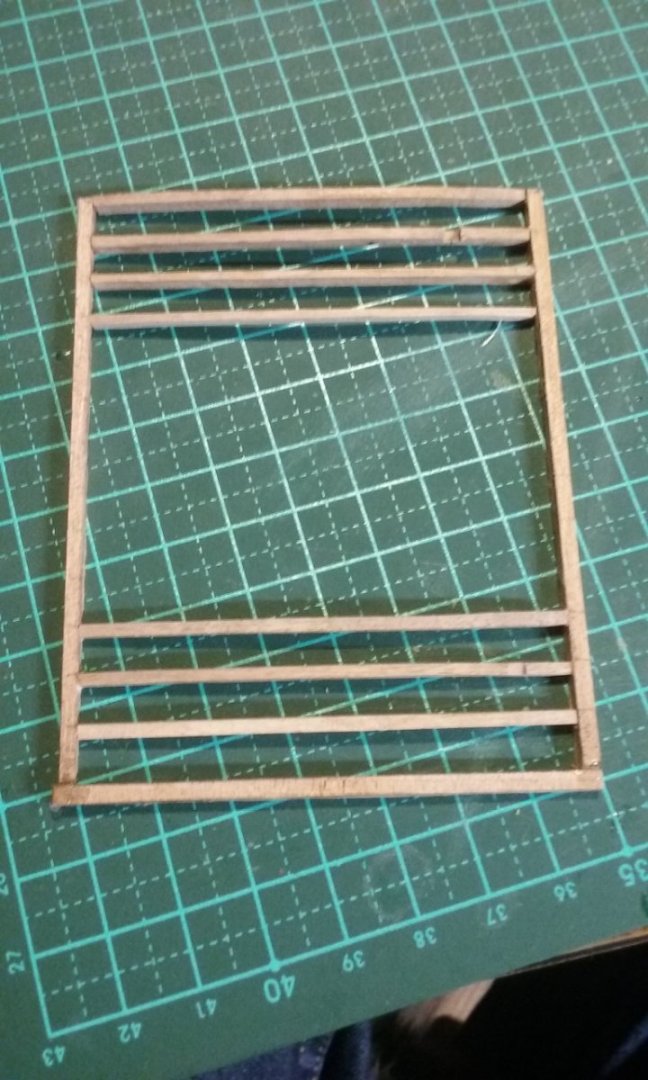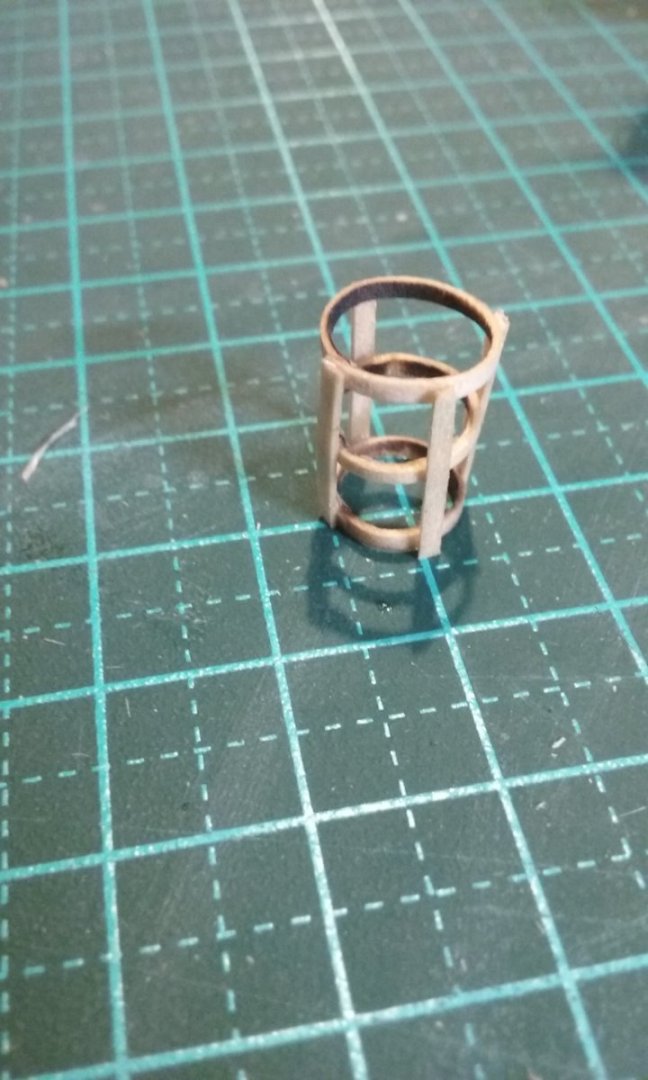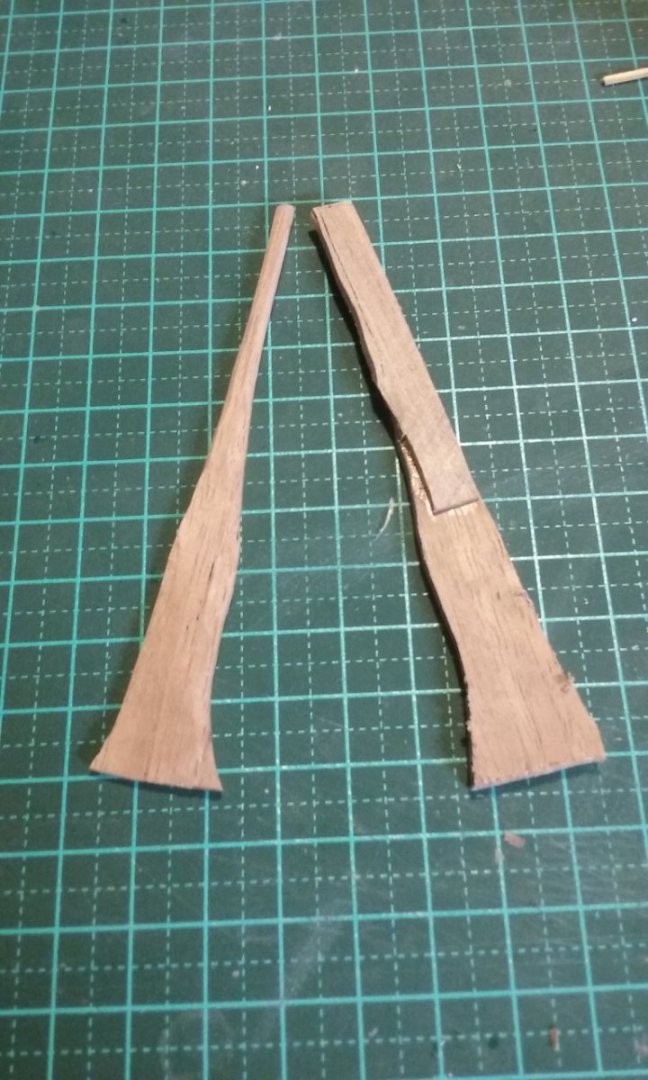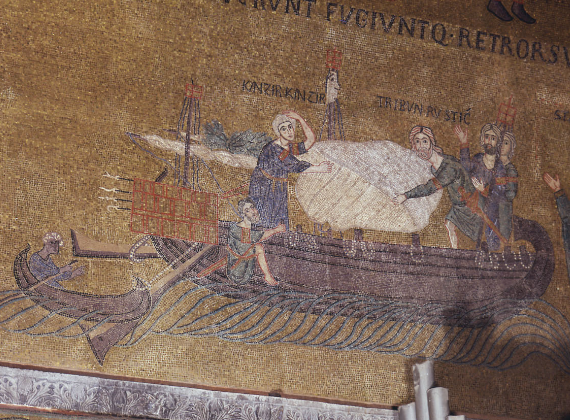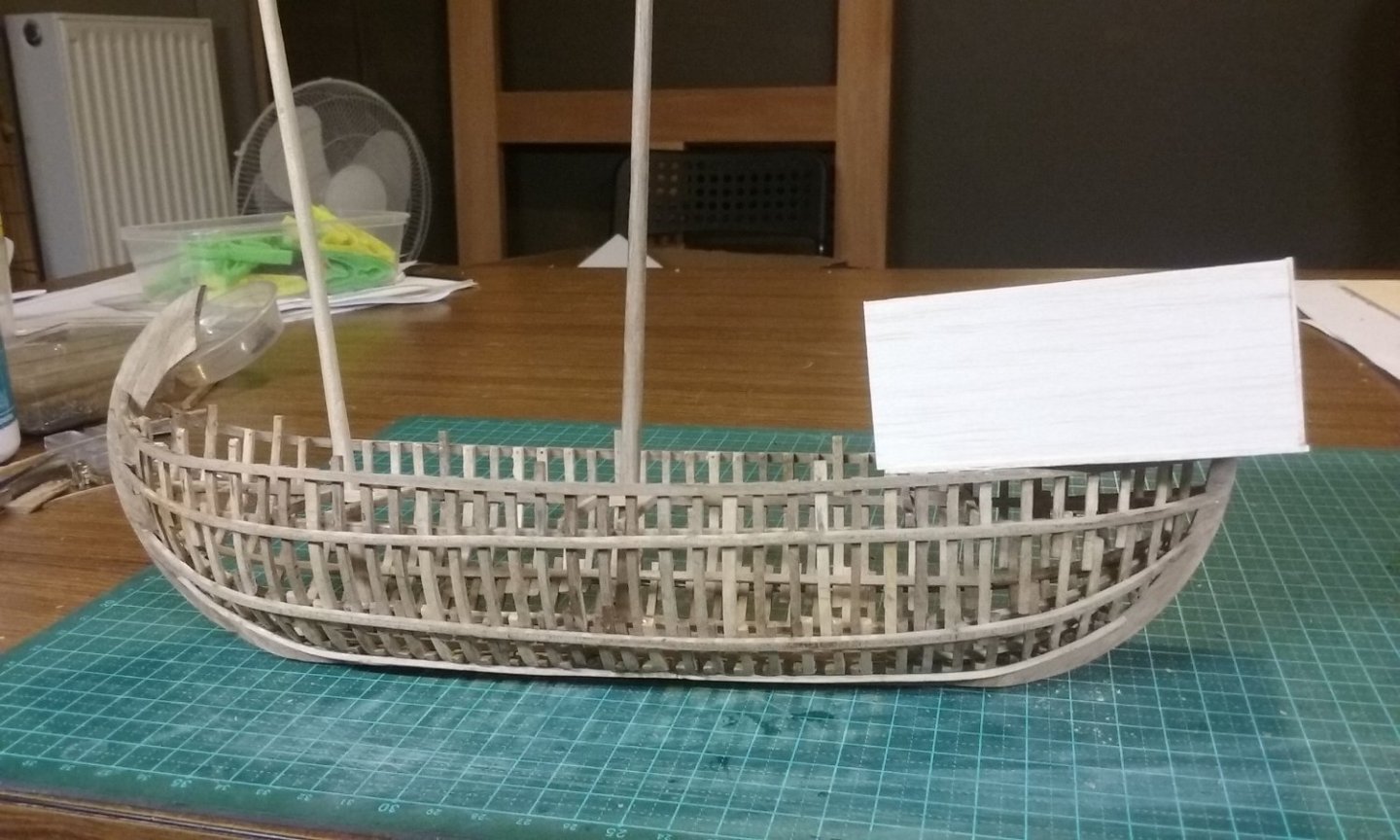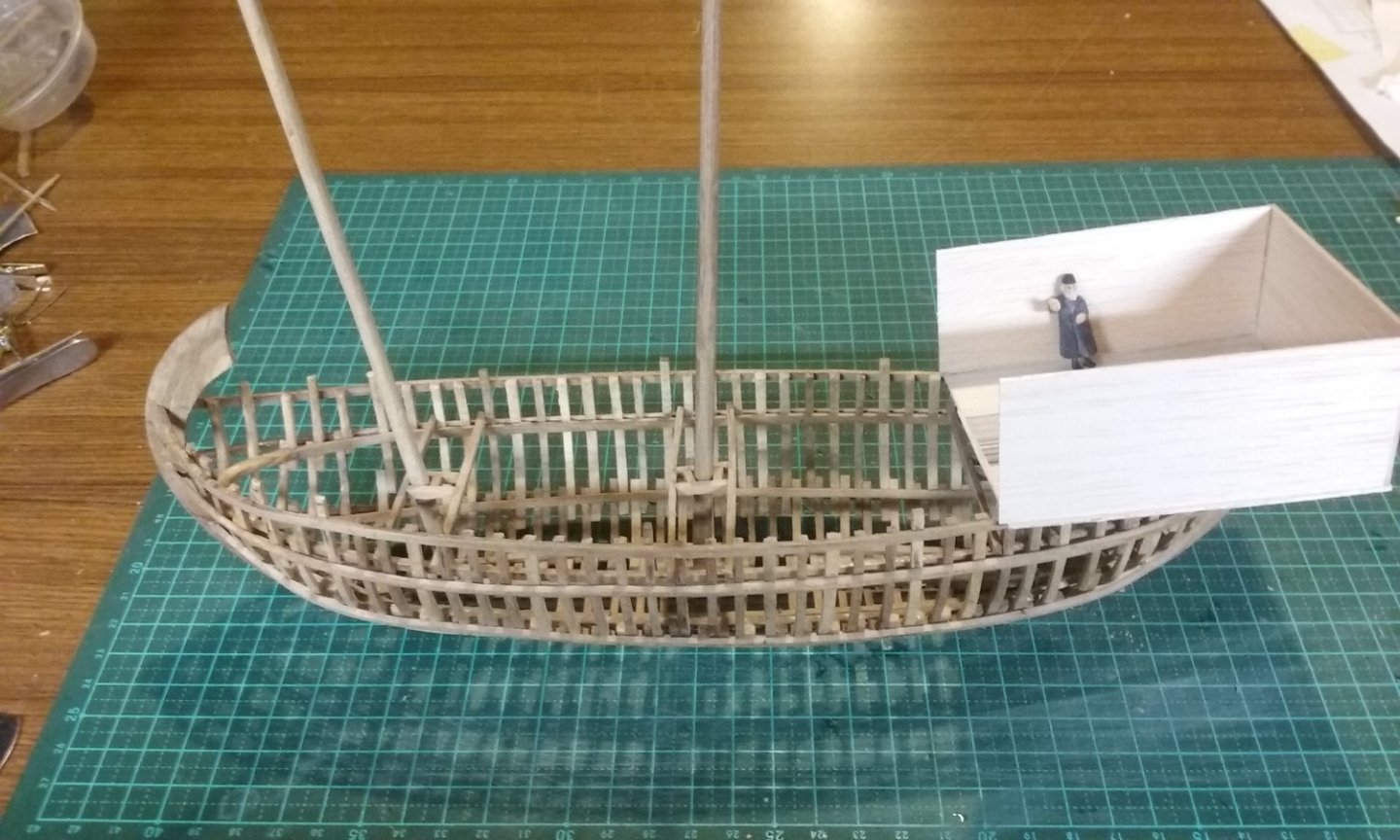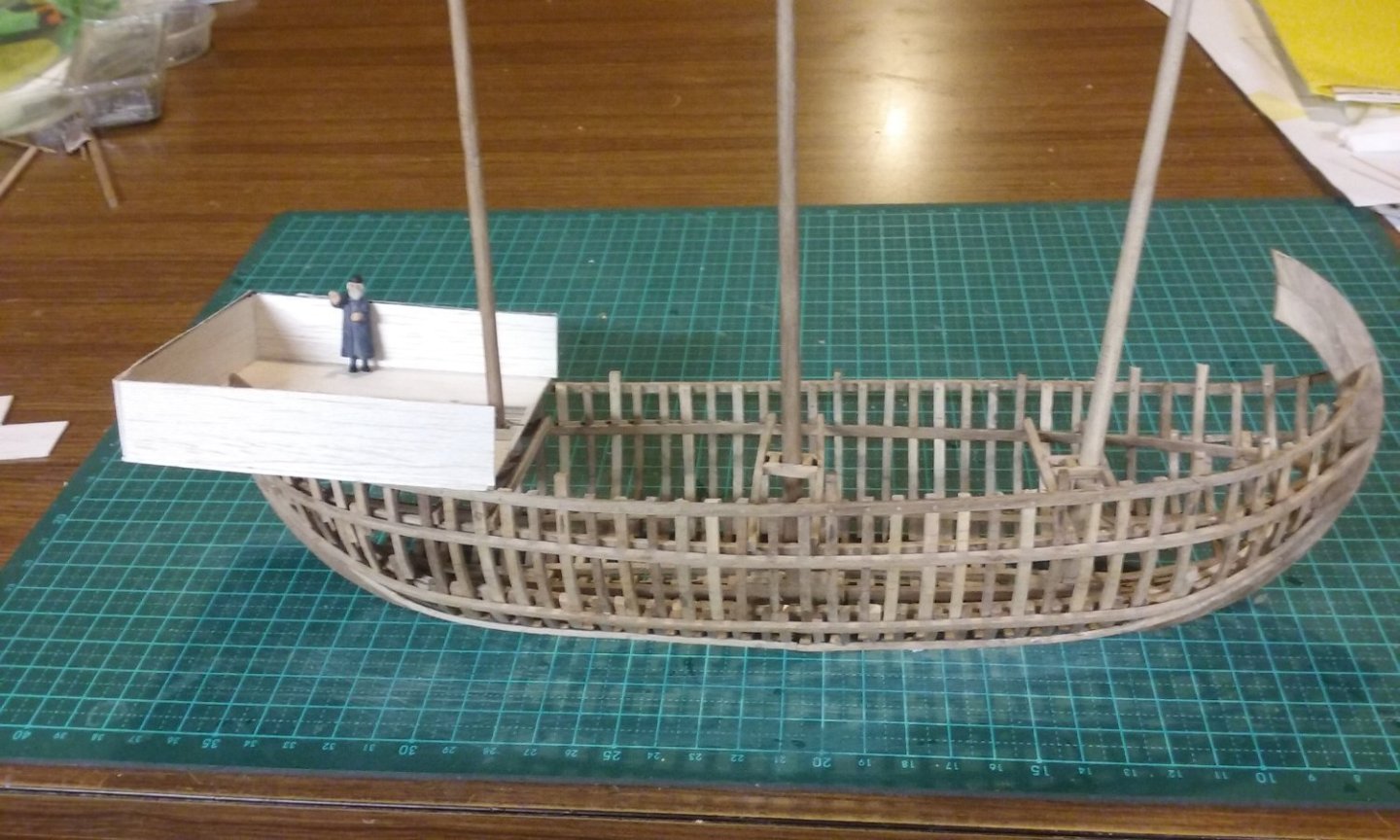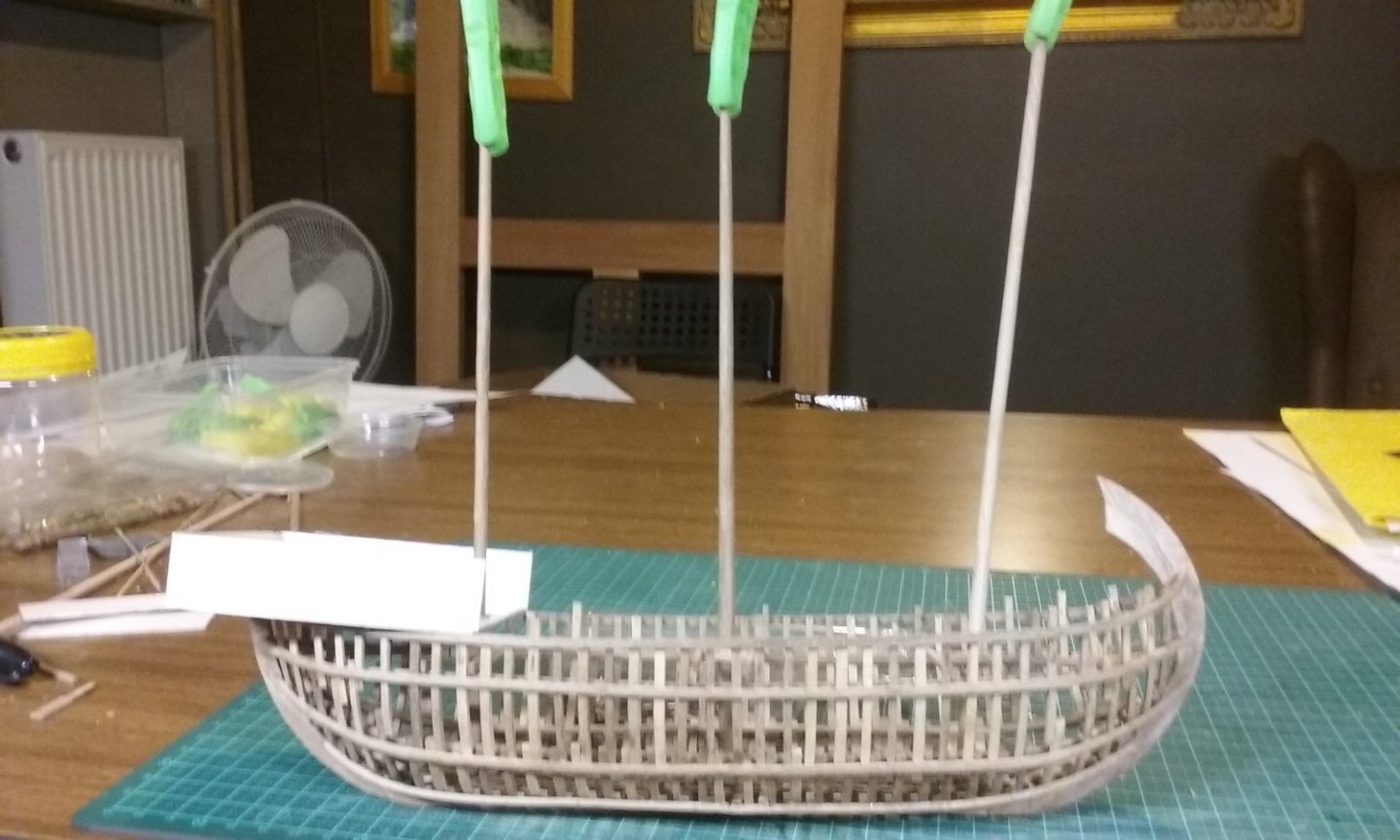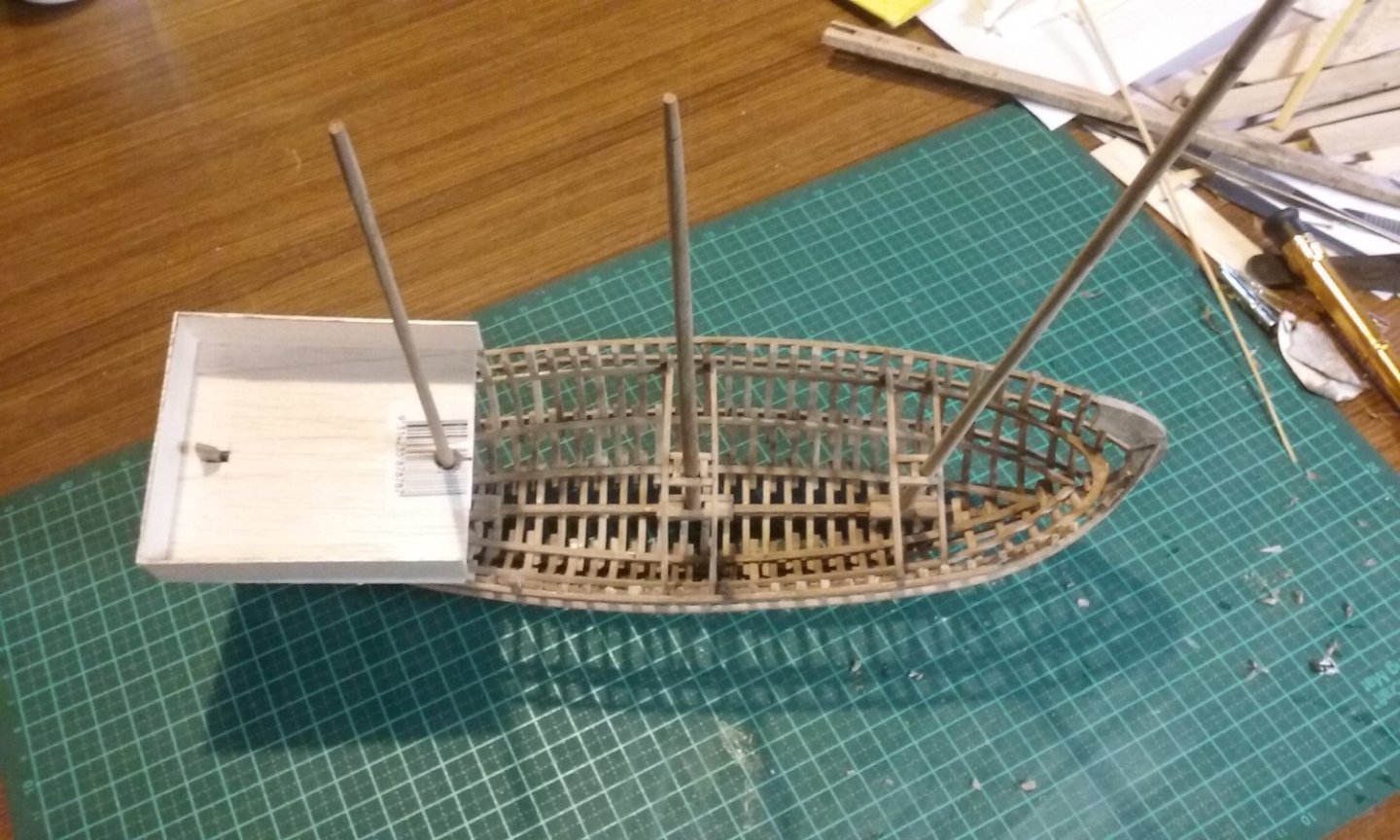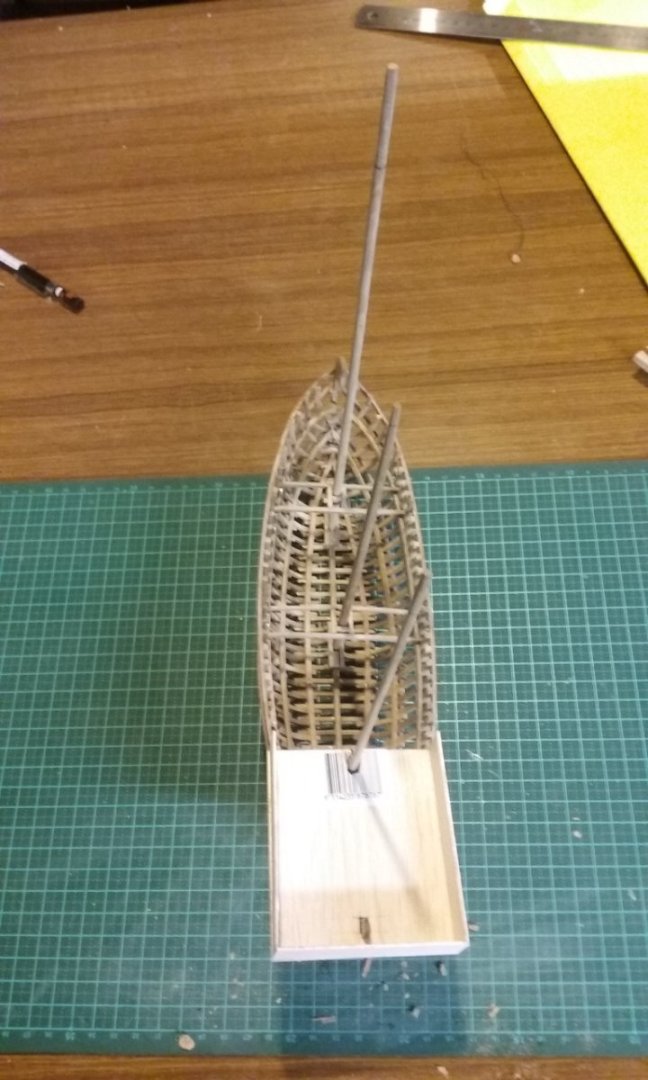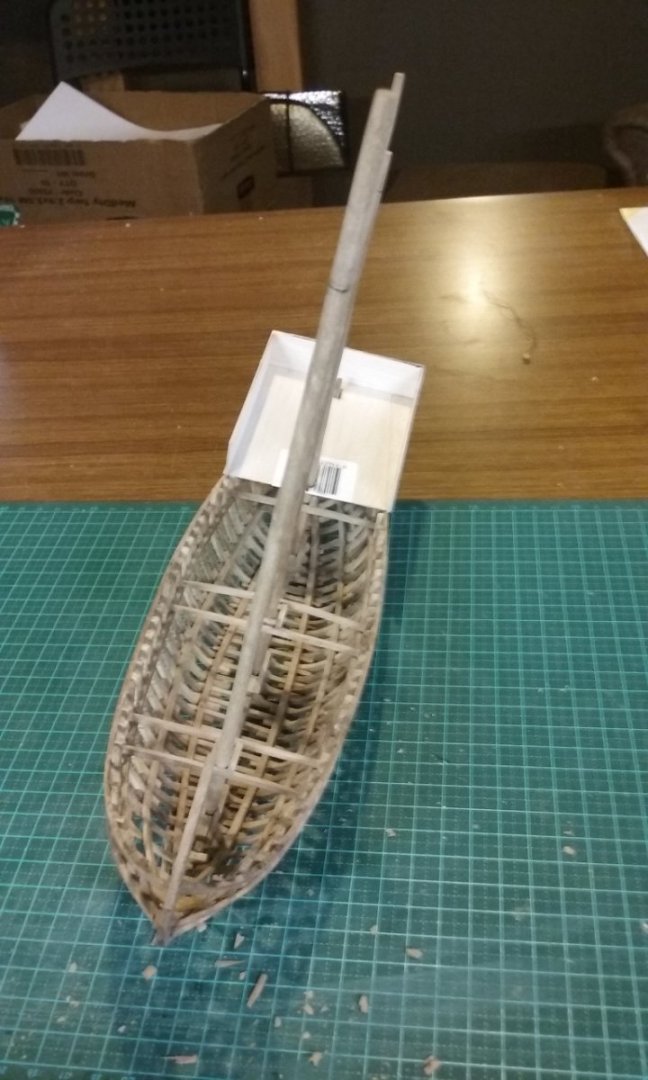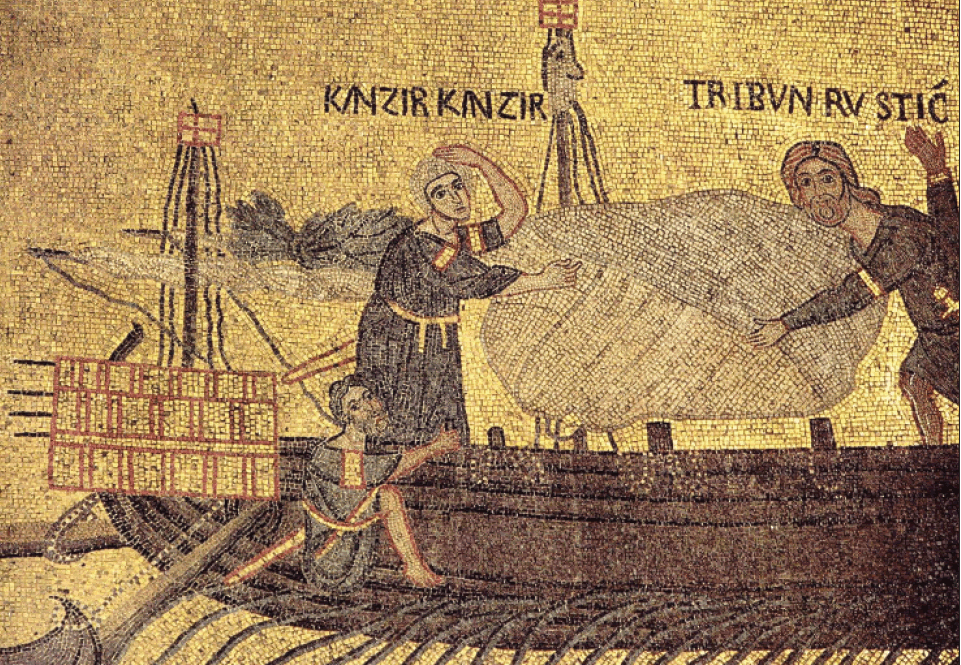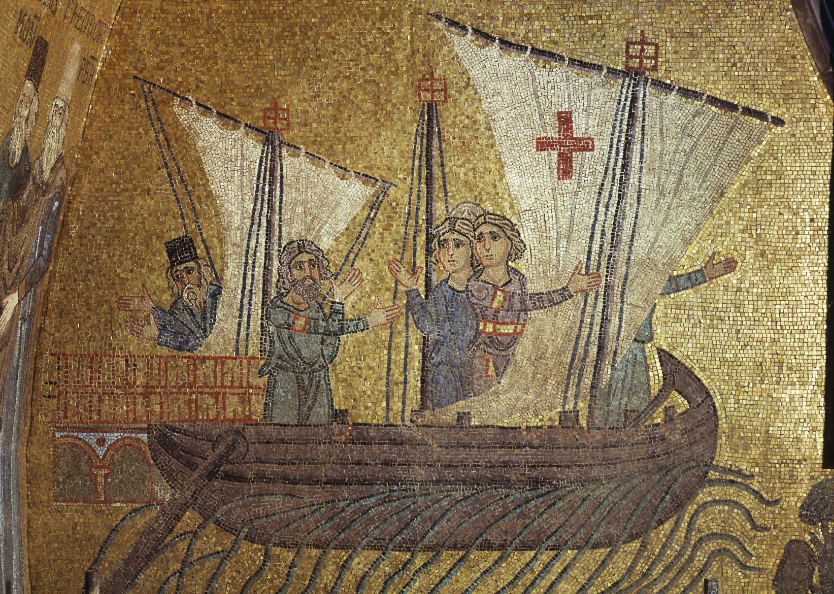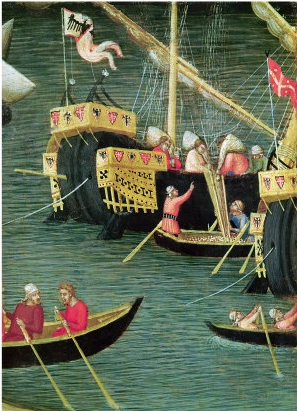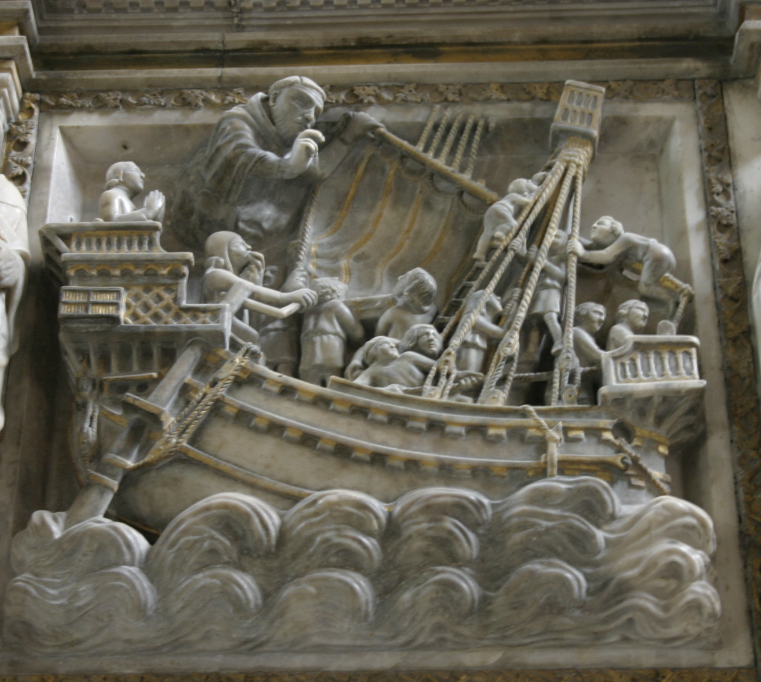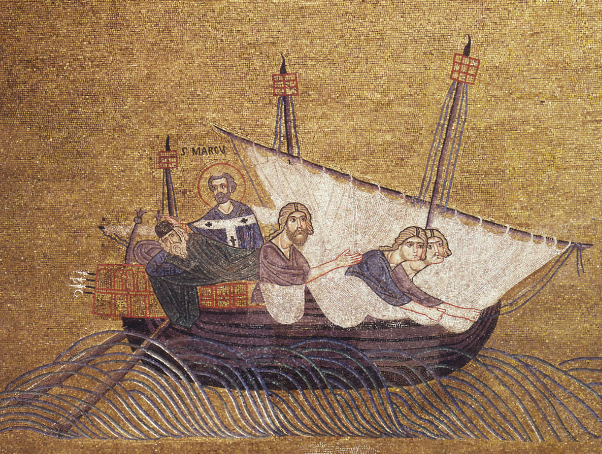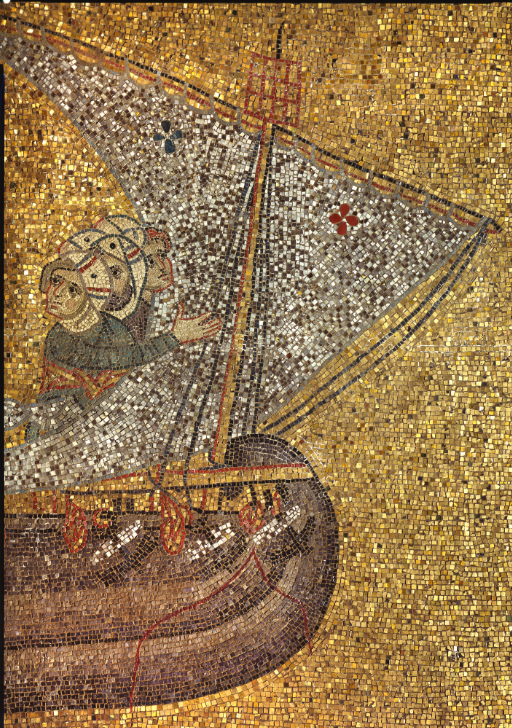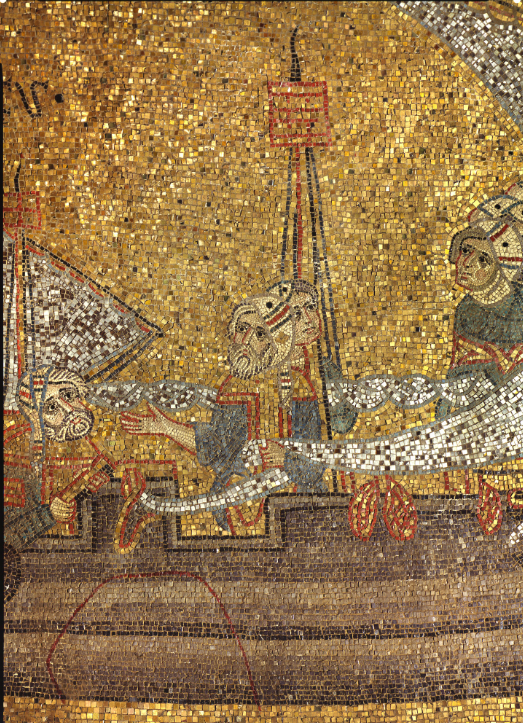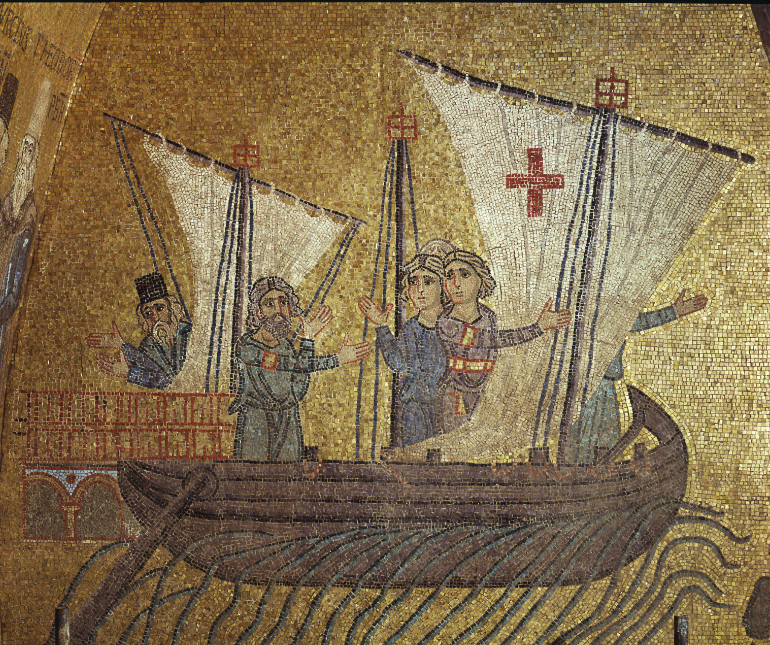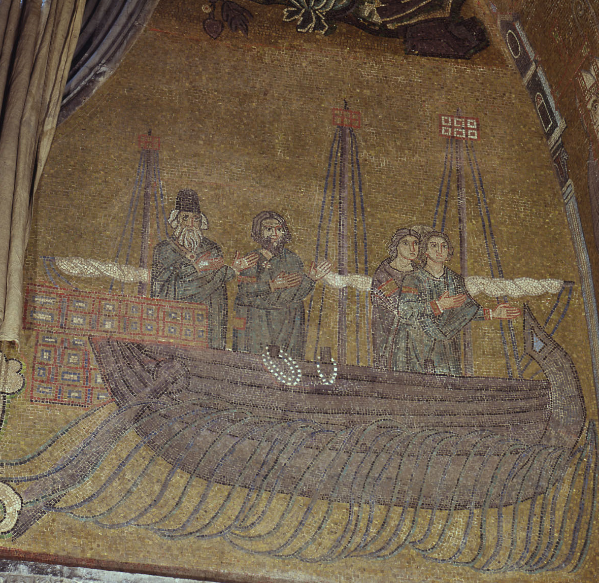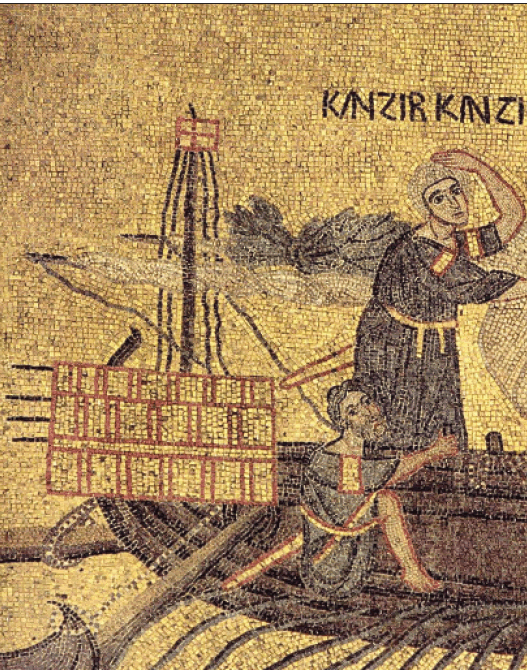-
Posts
7,989 -
Joined
-
Last visited
Content Type
Profiles
Forums
Gallery
Events
Everything posted by Louie da fly
-
Thanks, mate. A lot of work and very fiddly, but worth it. Now, back to your regularly scheduled program. Steven
-
Sorry, can't help you there. I have no information either way. You might try looking at https://www.pinterest.com.au/lowe1847/galleons/ to see if there's any evidence of them in those contemporary pics. But to be honest, I doubt that they'd have continued in use that late. Once heavy ship-killing cannon became common, the previous tactic of defeating the enemy by boarding his ship would have been largely replaced by cannon duels, so getting close enough to use gads would have been less a part of the scene. However, that's just my opinion, and maybe I'm wrong - maybe close-range combat and boarding were still a large part of common sea warfare, which would perhaps mean that gads still had a place. OTOH, use of fairly efficient anti-personnel firearms night also have replaced them by this time. Probably a saint's name would be good. Or, there was a ship called Cacafuego (sh*t fire) to indicate how well armed she was. Or perhaps "Neustra Senora de ("Our Lady of . . .something or other). Check reports of Francis Drake's fights with the Spanish for ships' names you might like - also Grenville's battle with them in the Revenge. (Blush). Steven
- 279 replies
-
- Spanish Galleon
- Imai
-
(and 1 more)
Tagged with:
-
Depending on how steady your hand is, you could hand-paint it. I used acrylic paint on a piece of (I think) cotton fabric, though mine was dark paint on light fabric - you might have to do more than one coat of paint if you did it this way, but it is a fairly simple design. Steven
-

Ancient galley rams discovered - photos
Louie da fly replied to Louie da fly's topic in Nautical/Naval History
That's the modern name. The Ancient name was the Aegates. See https://en.wikipedia.org/wiki/Battle_of_the_Aegates Steven -

Ancient galley rams discovered - photos
Louie da fly replied to Louie da fly's topic in Nautical/Naval History
Some more photos of rams from the Egadi finds. Apparently 26 of these have been found so far, along with helmet cheekpieces, coins and a sword . . . Steven -
Here's my first attempt to do a calcet based upon the mosaic ships. There was quite a bit of guesswork involved - even guessing that the black things above the tops actually were calcets rather than something else - I'd originally thought they were either the mastheads or flagpoles, but their strange shape, pretty much consistent in 4 out of 5 of the mosaics got me thinking they must be something else, and the only thing that seemed to fit was a calcet. Why a calcet would be that particular shape, I have no idea. But I can understand that there could be a wide variety of shapes that would still do the job. So rather than get too involved with the mystery of the shape (that can be for later) I just made one that seemed to be the right shape and would do the job. Based on pictures of calcets - both drawings from some centuries later than this model, and the photo of the Ma'agan Mikhael calcet referenced above, I've given it two sheaves. I worked out a possible configuration to make that work, but again, this is pure speculation. There are two tyes attached to the lateen yard, each of which runs through one of the sheaves in the calcet (at the top of the mast) and down. They come together to form a strop around a block which connects via the halyard to a knight at deck level. There's no direct evidence that this is how it was done, either iconographic or written, but it should work. So here is the calcet for the mizzen, with a scarph joint to connect it to the mast itself. Note: The scarph joint doesn't line up perfectly - this is a prototype; I've cut it right up at the top of the mast, above where it's supposed to be, just to see if it works. As it seems to be ok I'll now do the real joint in the correct position - the bottom of the joint should be in line with the base of the "crow's nest". I think I can arrange things to the tyes don't foul the sides of the crows nest, which is an open framework (see pictures in post #155 above). I've also added more deck beams for the main hull and finished the deck beams for the aftercastle, with openings for the mast partners and for a companionway coming up from the cabin space below. And then I removed the aftercastle to work on the deck beams and sides. I added a railing around the aftercastle, which is how I interpret the mosaics. Next I plan to do all the rest of the deck beams (allowing openings for two hatches - one between the aftercastle and the central mast, and one between that mast and the foremast). And make and install beam clamps for the deck of the cabin below the aftercastle. Unfortunately my cheap soldering iron which I've been using as a plank bender, up and died today, So it looks like I'll have to get another one - unless I can make the vegetable steamer do the job. Worth a try. Steven
- 508 replies
-
Nice work on the planking - and on getting the hull to separate from the strongback. Now for a whole new adventure with the rest of the vessel. Steven
- 134 replies
-
- sea of galilee boat
- SE Miller
-
(and 1 more)
Tagged with:
-
Clever. I might steal this idea sometime. Steven
- 134 replies
-
- sea of galilee boat
- SE Miller
-
(and 1 more)
Tagged with:
-

Tips to start building model ships again
Louie da fly replied to Adri's topic in Wood ship model kits
And clamps! Lots of clamps of all types and sizes. I have a wide array of clamps, from bulldog clips to clothes pegs as well as proper clamps designed for carpentry. I also find a small vise that you can attach to a table is often helpful. Steven -

HMCSS Victoria 1855 by BANYAN - 1:72
Louie da fly replied to BANYAN's topic in - Build logs for subjects built 1851 - 1900
My brain hurts. Steven- 1,013 replies
-
- gun dispatch vessel
- victoria
-
(and 2 more)
Tagged with:
-
I've temporarily (with a couple of small dabs of glue) fixed the aftercastle deck to the hull to adjust the position and verticality (is that a word?) of the mizzen mast, with quite pleasing results. There's still a little wriggle room in the mast partners which will allow me to get it exactly right. Additionally, I've removed the deck framing below the aftercastle, which was in line with the main deck. I intend to make everything below the aftercastle into cabin space, with a lower deck level. I'm not sure at the moment how much work I'll put into this cabin space, as it will be hidden anyway, but I'm thinking of having a crew member climbing up through the companionway onto the after deck to add a bit of interest. The masts haven't yet been cut to length - I'm still thinking about exactly how I'm going to configure the tops and calcets And after referring back to the paper by Lawrence V. Mott of Texas A&M University entitled The Development of the Rudder A.D. 100-1600: A Technological Tale, I've realised that I'd misinterpreted the rudder shape somewhat, as it was intruded on by other items in the picture I was working from (refer to the mosaic picture in my previous post), and that I'd missed the fact that both rudders were shown in the mosaic (though the artist seems to have got the nearer rudder facing backwards). And, following Mott, here is the aerofoil (or perhaps aquafoil?) cross-section of the rudders. That's all for now. Steven
- 508 replies
-
Mock-up in balsa for the side rudders, based on one in the mosaic pictures. And the roughed out rudders. I discovered too late that one of them was too thin at the handle end, so I glued another layer of wood to thicken it up. I'll post a pic of the completed ones when they're finished. The deck for the aftercastle under construction: And my first experiment in curving timber really tightly - to form the top. Worked fairly well, but the wood started to char - I can't lower the temperature of the soldering iron. But I have hopes of a vegetable steamer that I have permission to use outside the kitchen. Steven
- 508 replies
-
Oh, certainly. But I'm convinced that the artists were portraying what was there, and who am I to decide my concept of "rightness" trumps what was actually done at the time? Yes, I agree, on both the issues you raise. Yes, I'd already decided to do that. With a scroll saw it shouldn't be all that difficult to do identical ones, but in this case each pair of knees (starboard and port) will be of a different length from all the others as the hull tapers but the aftercastle remains the same width. I'm even looking at the possibility of radiating the knees out perpendicular to the curved line of the hull. (PS: I've sent you a PM regarding a facet of the rigging). Steven
- 508 replies
-
Thanks for the information. I use PVA (white) glue, not CA. But good to know packing tape works for CA. I might need that at some time. Steven
- 134 replies
-
- sea of galilee boat
- SE Miller
-
(and 1 more)
Tagged with:
-
It's good to see you finding solutions to the problems as they arise. You seem to be overcoming them well. Do you know what kind of wood that is? BTW, it's probably not important now, but I found wrapping clingwrap around the bit I didn't want to be glued to the hull worked quite well (though I was using a plug, not a strongback). Steven
- 134 replies
-
- sea of galilee boat
- SE Miller
-
(and 1 more)
Tagged with:
-
Bienvenu à MSW, Pierre! Are you working on a particular model at the moment? Steven
-
I made a balsa mock-up of the aftercastle, to see how it all works. Here's the first version. This is why I make mock-ups - to see if it works the way it's drawn. It's rather too high - no way anybody can see over it, even though I intend to make the sides latticework. Also likely to make the ship top-heavy. I looked back at the mosaic I was using as my source and realised the aftercastle on this one actually started well below bulwark level, and the other mosaics showed the top of the aftercastle quite low. So here's the next iteration - I just cut the top off. I thought about lowering the whole castle but decided against it as most of the mosaics show its walls pretty much the same height. One other thing - it's perfectly rectangular rather than tapered to take into account the narrowing of the stern. But even though this looks somewhat weird, it follows many, many representations of ships of this period, so I'm going to continue with it, even though it offends my 21st century sensibilities. I think I've got the heights of the masts correct now, but I won't cut them to length just yet - I'm working on how they're going to be configured at the top, what with the calcet and all. Steven
- 508 replies
-
I want to be you when I grow up . . . Steven
- 290 replies
-
- Quinquereme
- Finished
-
(and 1 more)
Tagged with:
-
Good luck with the insertion. You're a braver man than I am! Steven
- 290 replies
-
- Quinquereme
- Finished
-
(and 1 more)
Tagged with:
-

Mast Spar and Rigging Spanish Galleons
Louie da fly replied to Bill Jackson's topic in Masting, rigging and sails
Portuguese rather than Spanish, and I don't know whether it contains info on masts, spars and rigging, but you might try the Livro de Traças de Carpintaria of 1616 - https://shiplib.org/index.php/collections/historical-sources/treatises-on-shipbuilding/livro-de-tracas-de-carpintaria-portugal/ - but it is in Portuguese . . . -
Unfortunately the entire document is only available (as far as I know) in black and white, but here is the reference - https://gallica.bnf.fr/ark:/12148/btv1b9076701x/f118.item - the rest of the manuscript is also well worth looking at - it's replete with all kinds of interesting pictures - quite a few more ships (all galleys IIRC except this one), but all kinds of other things. I agree, the picture certainly looks like a hockey stick calcet with a short vertical "topmast" above it, presumably connected to it, to which the "crow's nest" is attached. How exactly this was configured is something of a problem and I'm going to have to think about it a bit. On the other hand, regarding the San Marco ships, even if we assume the artists got the "all-around the mast" tops wrong (which I think is quite likely) and they should be only on the back of the mast, nonetheless there's this pointy black thing sticking out above the top itself. Could this be the top of a calcet? And if so, how was it configured? And though one set seem straight up and down, the others are looking suspiciously hockey-stickish . . . particularly the second-last one. Added to this I'm still trying to work out how a two-sheaved calcet worked (and they all seem to have had at least two) - I think we had this conversation before - why have two ties? My understanding is that the knight at deck level would have maybe as many as three sheaves, but that it would be paired with a block above it with perhaps two sheaves, and the block would be attached to a single tye that goes through the calcet, adjusted by the halyard running between the knight and the block. So how does a double sheaved calcet fit in with this configuration? It's breaking my brain at the moment. Steven
- 508 replies
About us
Modelshipworld - Advancing Ship Modeling through Research
SSL Secured
Your security is important for us so this Website is SSL-Secured
NRG Mailing Address
Nautical Research Guild
237 South Lincoln Street
Westmont IL, 60559-1917
Model Ship World ® and the MSW logo are Registered Trademarks, and belong to the Nautical Research Guild (United States Patent and Trademark Office: No. 6,929,264 & No. 6,929,274, registered Dec. 20, 2022)
Helpful Links
About the NRG
If you enjoy building ship models that are historically accurate as well as beautiful, then The Nautical Research Guild (NRG) is just right for you.
The Guild is a non-profit educational organization whose mission is to “Advance Ship Modeling Through Research”. We provide support to our members in their efforts to raise the quality of their model ships.
The Nautical Research Guild has published our world-renowned quarterly magazine, The Nautical Research Journal, since 1955. The pages of the Journal are full of articles by accomplished ship modelers who show you how they create those exquisite details on their models, and by maritime historians who show you the correct details to build. The Journal is available in both print and digital editions. Go to the NRG web site (www.thenrg.org) to download a complimentary digital copy of the Journal. The NRG also publishes plan sets, books and compilations of back issues of the Journal and the former Ships in Scale and Model Ship Builder magazines.




